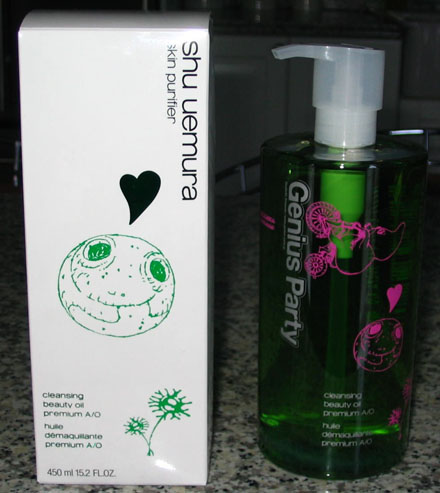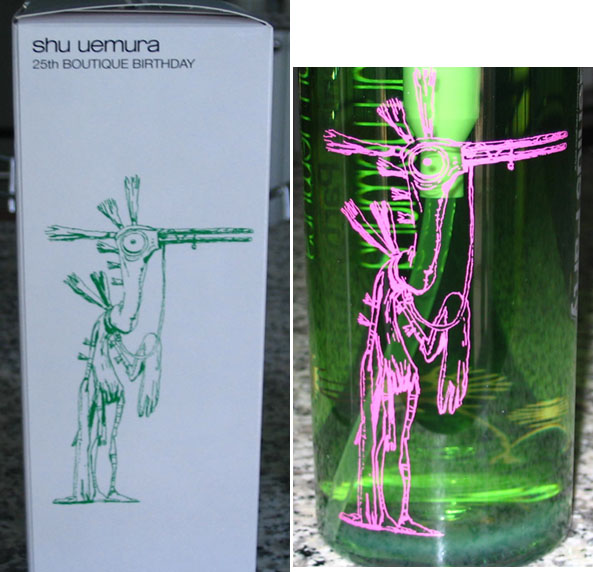As video games are not my forte, this will be a short post. I did however want to briefly share what I got from the Super Mario collection from Shu Uemura. I couldn't find much information as to why they decided to collaborate and why this year – Super Mario debuted in 1985 so it's not a major anniversary of the game. Of course, I was unable to access the full article in WWD because my local library STILL doesn't have that particular issue available, but I was able to cobble together a few WWD quotes from Shu's artistic director regarding the collection. Kakuyasu Uchiide told the publication, "This collection is not so much about creating, but it is about playing. I want people to be able to play with their individual style. I really want to show what is our spirit, our DNA, our creativity. That's the only way to realize what Mr. Uemura wanted to do, which was to strive to link art with cosmetics, to link art with beauty…This time we got inspiration from culture. Super Mario Bros. is one cultural aspect that is representative of Japan. It’s also really, really popular overseas." I have a feeling the full article might be able to shed more light as to how the collaboration with Nintendo came about, but as the company has teamed up with many other brands and designers (and also licensed a children's shampoo – Shu's collection is not the first one to have Super Mario themed haircare) I guess it's not that unexpected that they partnered with a Japanese makeup brand.
Some of the items weren't sold in the U.S. and the palette was completely sold out, so I had to go to my trusty personal shopper in Japan to get my grubby paws on them.
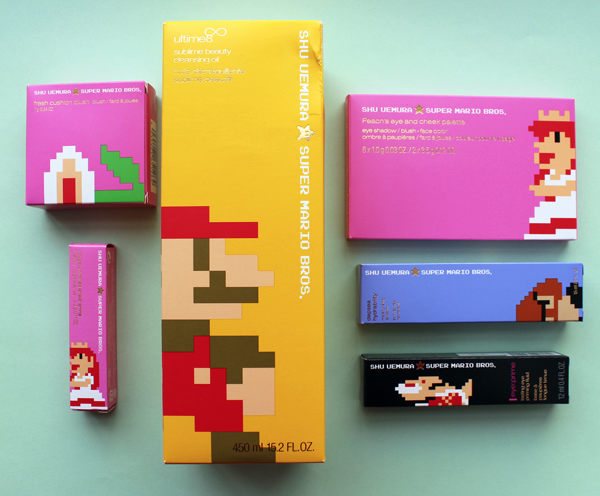
The packaging design is taken from the game's original 1985 look.
 (image from forum.flymeos.com)
(image from forum.flymeos.com)
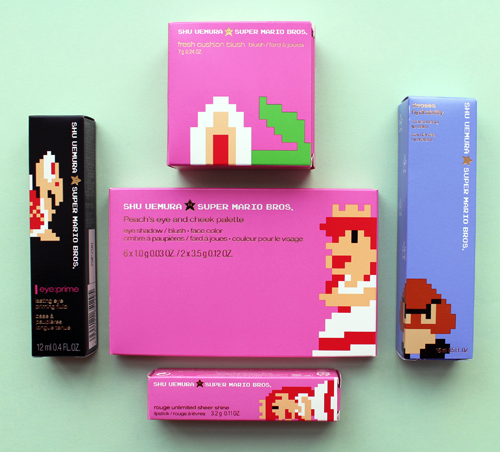
The basic premise of the game: "Super Mario Bros. takes place in the Mushroom Kingdom. The game begins when a tribe of a turtle-like race known as the Koopa Troopas invade the kingdom and uses the magic of its king, Bowser, to turn its inhabitants into inanimate objects such as bricks. Bowser and his army also kidnap Princess Toadstool, the daughter of the Mushroom King and the only one with the ability to reverse Bowser's spell. After hearing the news, Mario sets out to save the princess and free the kingdom from Bowser. After traveling through various parts of the kingdom and fighting Bowser's forces along the way, Mario finally reaches Bowser's final stronghold, where he is able to defeat him and send him falling into a pool of lava, allowing the princess to be freed and the Mushroom Kingdom saved." The princess was always known as Princess Peach in Japan, but was changed to Princess Toadstool in the English version.

The flying turtles (Koopa Paratroopas) and little mushrooms (Goombas) are the most commonly appearing enemies of Mario. He can, however, usually defeat them by tossing a fire flower their way, the motif that decorates the cushion blush compact.
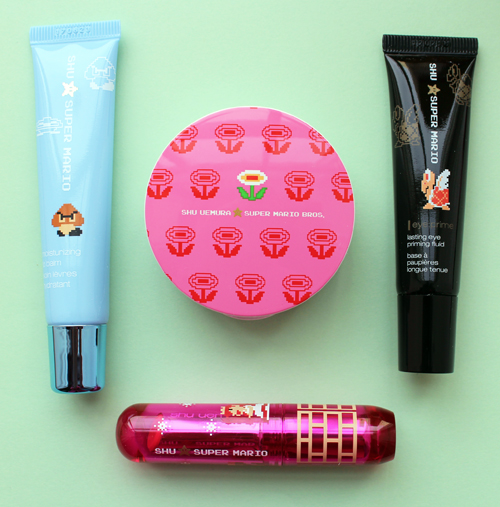
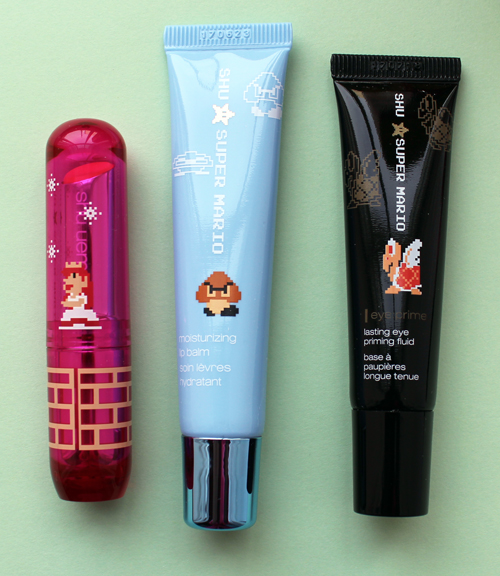

I always appreciate a pattern on the interior of boxes – such a nice little detail.
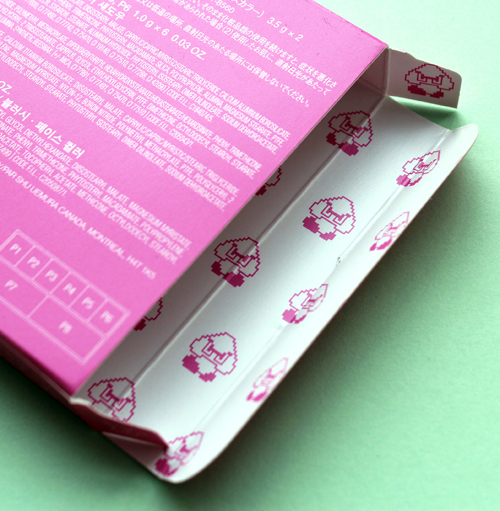
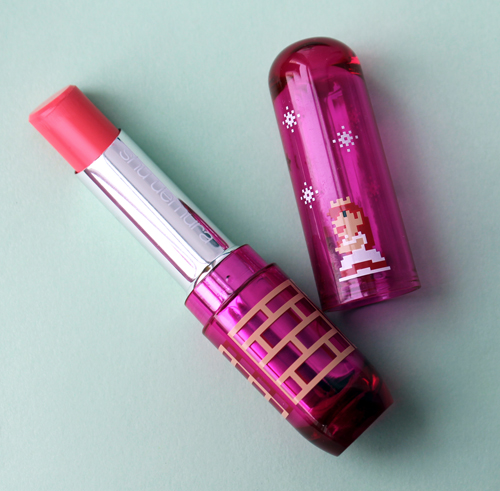
This was the only disappointment packaging-wise for me. Unlike other Shu cleansing oils, the pattern isn't printed directly on the bottle, only on the plastic wrapping. The reason I know this (and was able to avoid mistakenly taking off the outer wrapping) was because I purchased the smaller Mario cleansing oil to actually use, as I thought it would look cute in my bathroom. I went to peel off the wrap and realized the print was on there and that the bottle itself was plain. I have no idea why Shu decided to did that, as the patterns are printed directly onto the bottle with all my other limited edition oils.
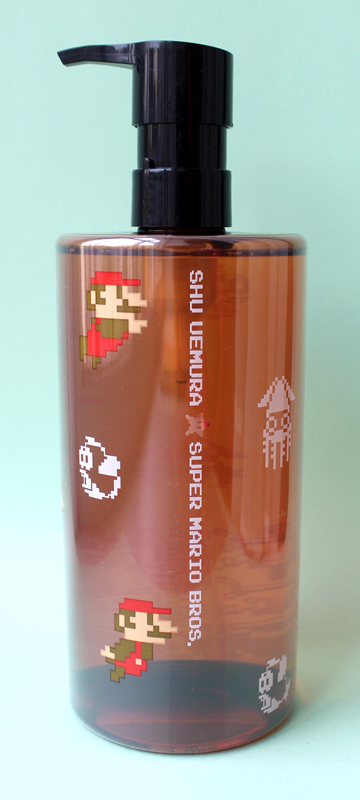
The palette was the standout of the collection, which sold out in a flash in the U.S. It's easy to see why – it has most of the main characters from the game complete with gold foil details, and the blushes on the inside are embossed with more motifs from the game.
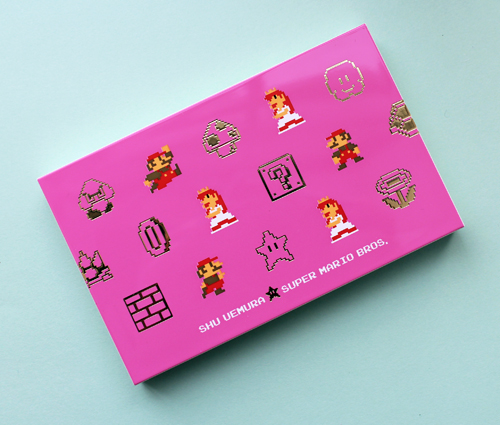

Here's just a short history of Super Mario Bros. In the early '80s Nintendo was struggling to keep afloat in the American market. The CEO ended up tapping a graphic designer who had never designed a game in his life, Shigeru Miyamoto, to come up with a compelling story and accompanying game. Loosely based on Popeye characters, Donkey Kong debuted in 1981 and introduced "Jumpman", who would become Mario two years later. Nintendo knew their audience wouldn't really respond to Jumpman – a proper name was needed. Mario ended up being the chosen moniker, named after a landlord who, during a meeting, stormed in and demanded the overdue rent for the warehouse Nintendo was occupying at the time. While Mario Bros. was relatively popular, it wasn't until 1985 when Super Mario Bros. debuted that the game really took off.
Some other fun facts about Super Mario, courtesy of The Guardian:
- Mario was originally a carpenter, not a plumber.
- The Super Mario bros series is in the Guinness Book of Records as the most successful gaming franchise of all time. As of 2010, it boasted global sales of over 240 million units.
- The character Mario has appeared in over 200 separate video games.
- It’s also the first game in which Mario cannot die by falling.
What do you think of this collection? Do you like video games? While I played Super Mario a few times as a kid, I probably would have been more into video games if I wasn't so uncoordinated. 😛
Save
Save
Save
Save
Save
Save
Save
Save
Save
Save
Save
Save
Save
Click to enlarge.
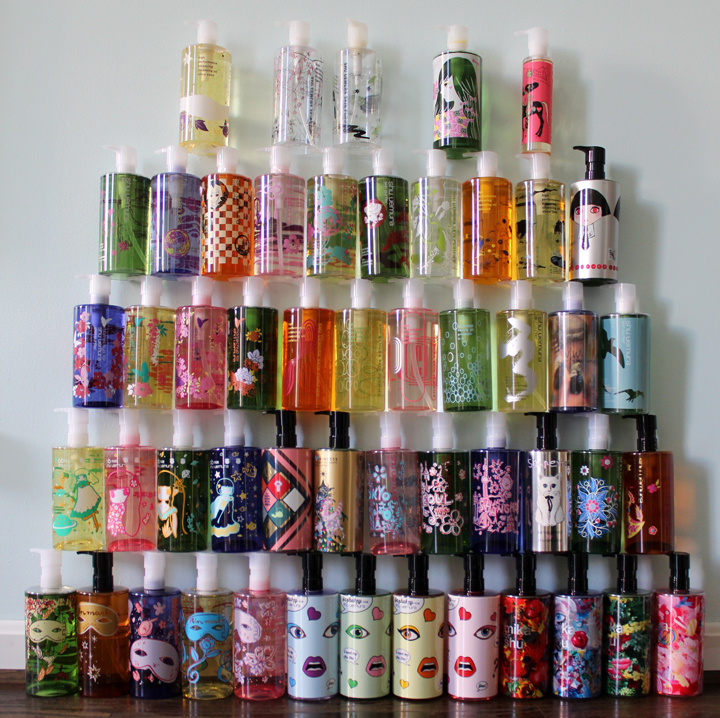
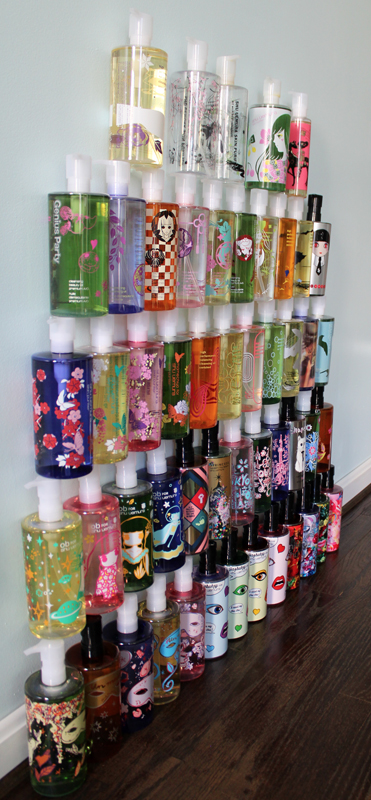
Top row, left to right: Ai Yamaguchi (2005), Ai Yamaguchi (2004), Lisa Kohno, Aya Takano
Second row, left to right: Genius Party, Tokyo Kamon Girls, Ai Yamaguchi (2005), Mon Shu
Third row, left to right: Mamechiyo, John Tremblay, Advanced Formula, Wong Kar Wai, Jiro Konami
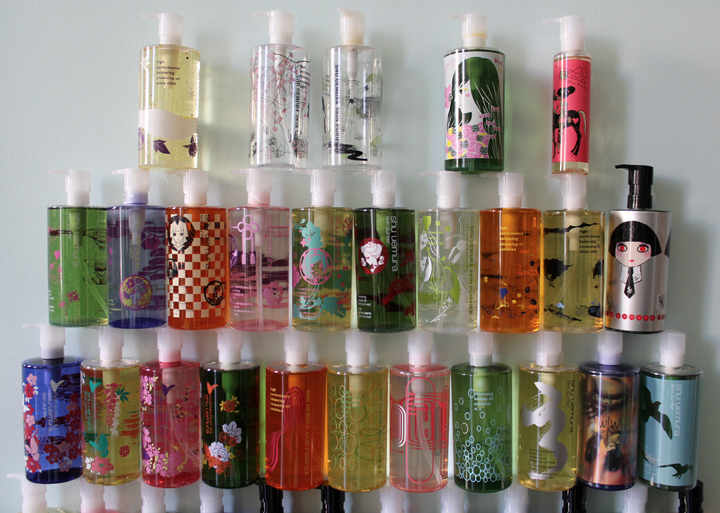
4th row, left to right: OB, Maison Kitsuné, Murakami, Tsuyoshi Hirano, Shupette, Qiang
Bottom row, left to right: Unmask, Yazbukey, Mika Ninagawa
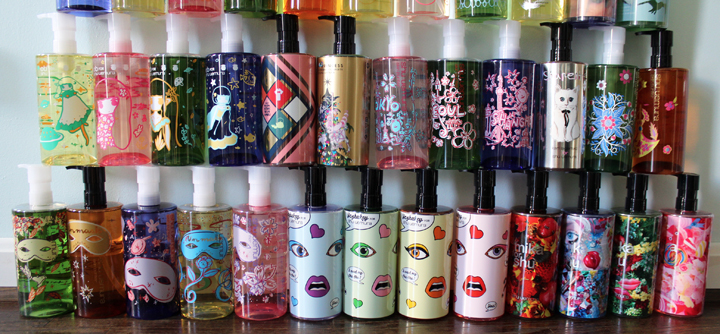
This was quite a delightful Chinese New Year surprise from Shu. In honor of the holiday, the company chose to feature the work of the Qiang people of the Sichuan province of China. Consisting of a population numbering around 310,000, this group has been producing complex, brightly colored embroidered patterns for over 1,000 years. Efforts to uphold the Qiang embroidery tradition were strengthened in the aftermath of a massive earthquake that devastated the area in May 2008. Today, Shu continues this effort by collaborating with Yang Huazhen, a fourth-generation Qiang embroiderer and official country representative of Qiang embroidery, to design two patterns related to Shu's Anti/Oxi and Ultime8 cleansing oils. The company is also working with Chinese nonprofit Xihan Action to start a fund that will allow Qiang women to take an advanced, 6 months-long embroidery class to ensure that Qiang cultural traditions will be promoted and sustained for future generations.
So let's get to it, shall we? I loved the way the pattern extends all the way around on both the boxes and bottles.
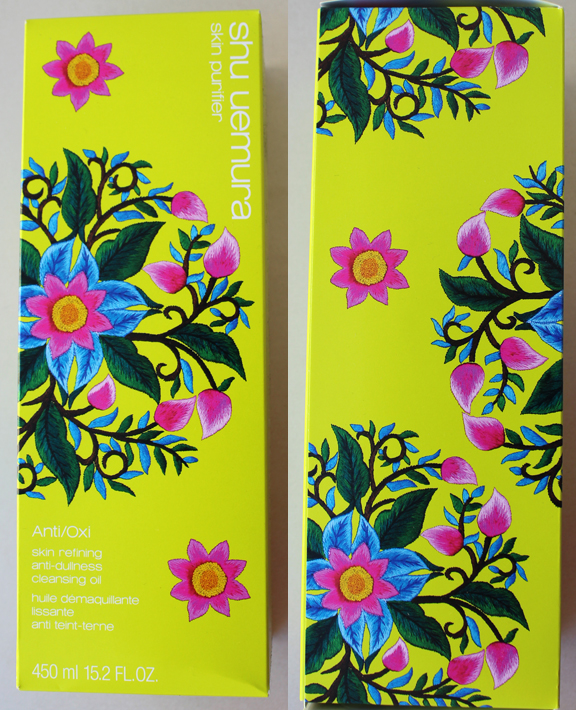
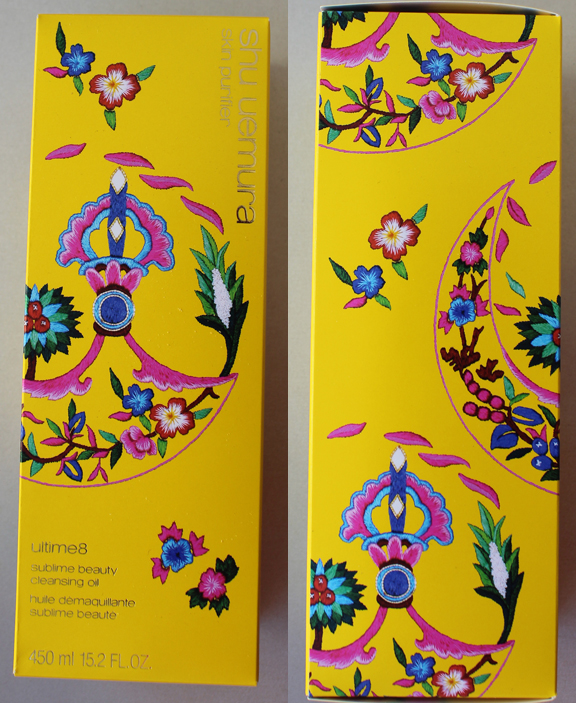
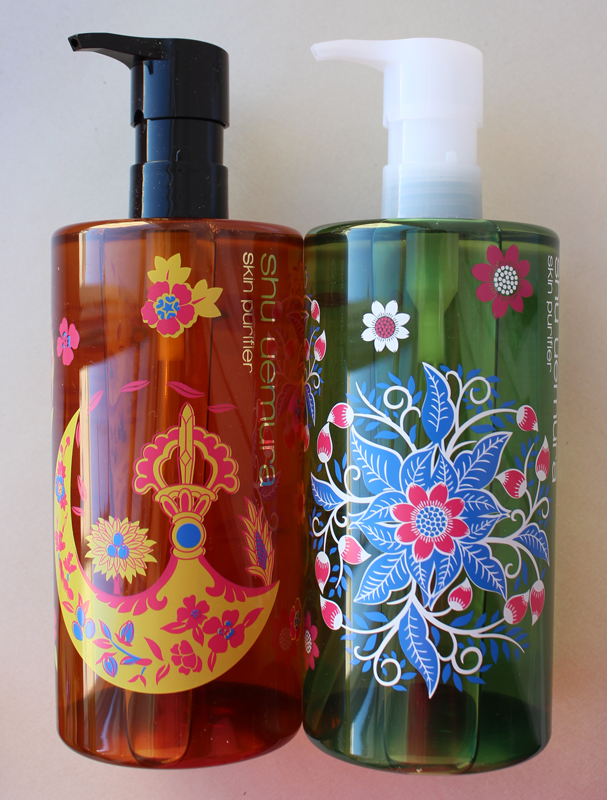
Shu had a code to get a free embroidered bag with purchase. Obviously it's mass-produced, but it would have been to cool for them to offer an embroidered bag for sale that was actually made by the Qiang, in addition to the oils. Then the proceeds could go to the nonprofit they're working with.
The design on the Anti/Oxi oil "represents eternal youth" since it contains green tea extract. At least that's what I gathered from Shu's unintelligible product description: "The traditional embroidery patterns are reinterpreted and meet the symbol of youth green tea." Mmmkay.
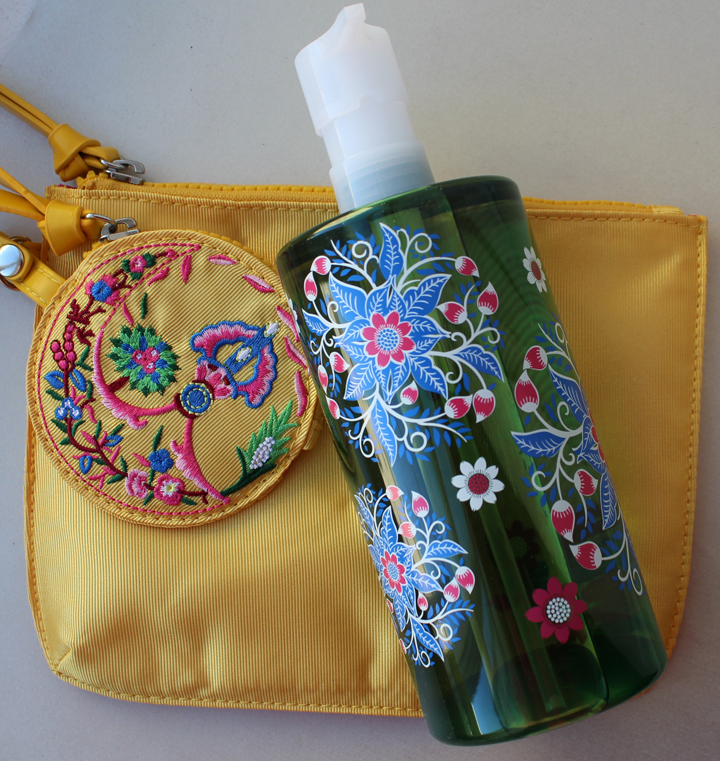
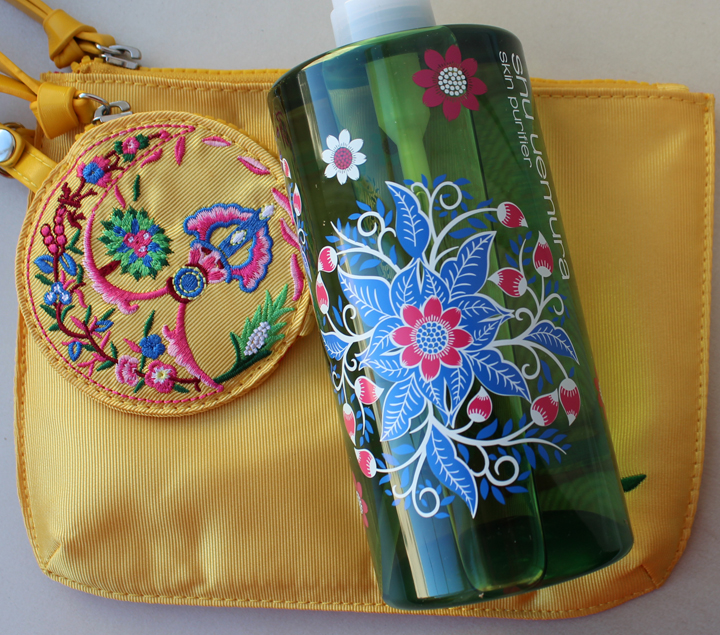
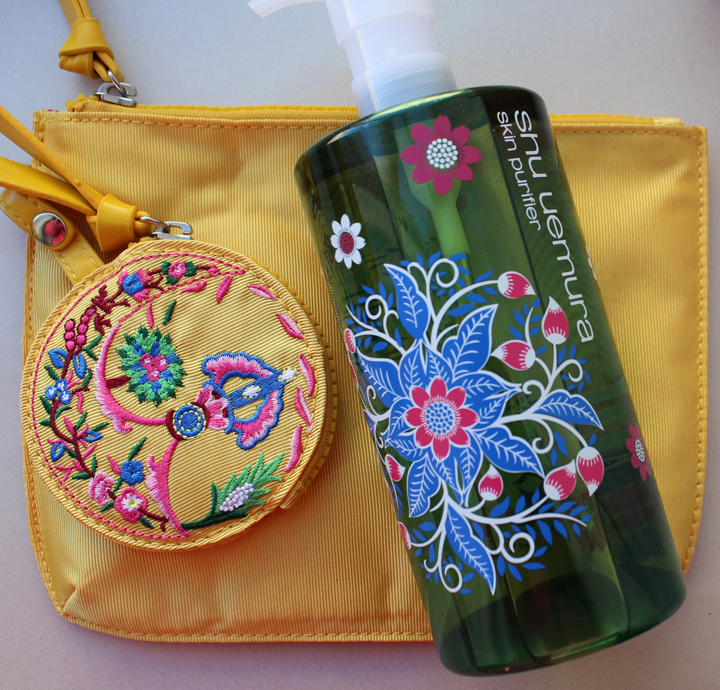
As for the Ultime8 oil, the meaning behind the pattern was equally befuddling. "A combination of ultimate motives into one embroidery. Vajra – a mystical symbol for power associated with ultime8 botanicals – promises vitality for life." Well, that at least allowed me to look up the word "Vajra", a Buddhist symbol.
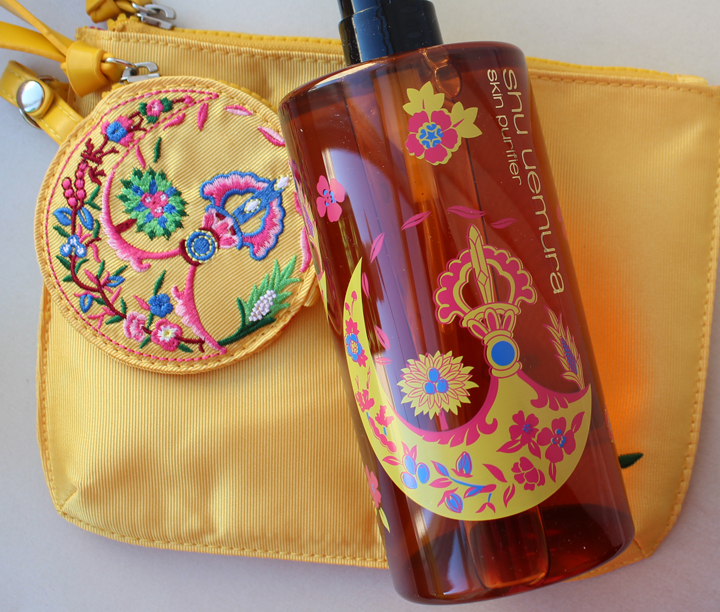
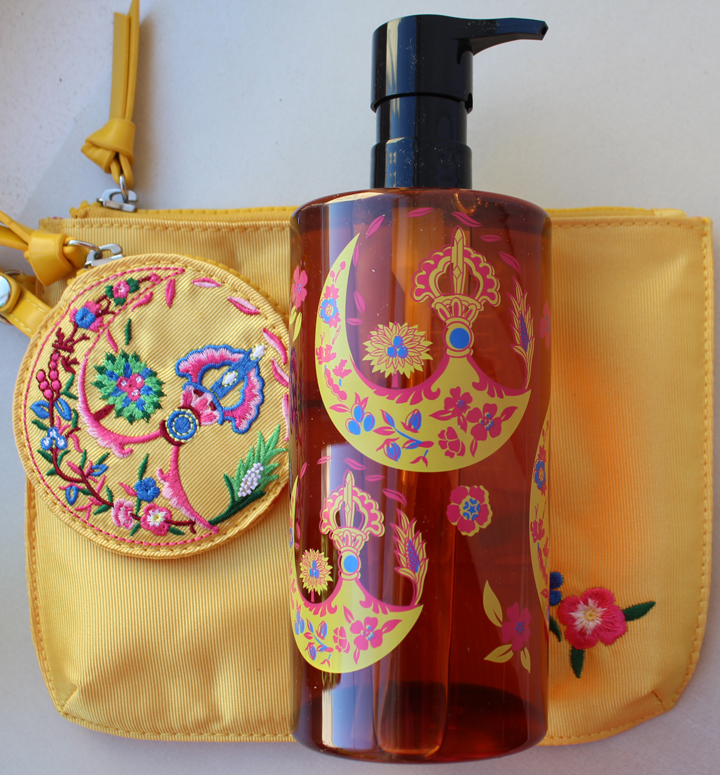
I did a little investigating to come up with examples of Qiang embroidery to see if the ones from the cleansing oils resembled them at all. The Smithsonian had images of some wonderful textiles created by Qiang women at the 2014 Folklife Festival. They show that the patterns on the oils really are quite authentic both in color and design.
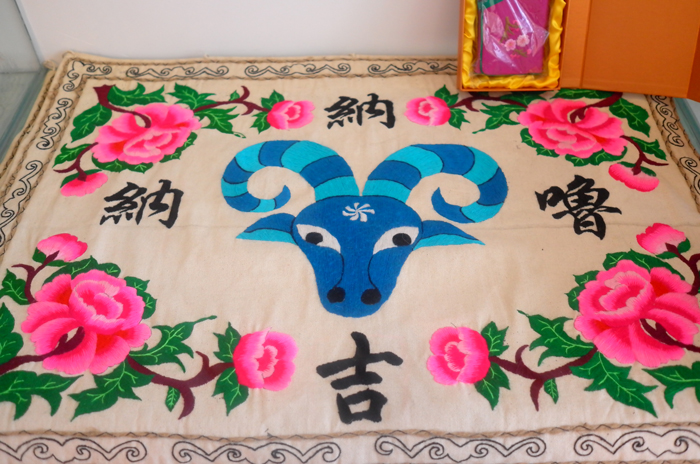
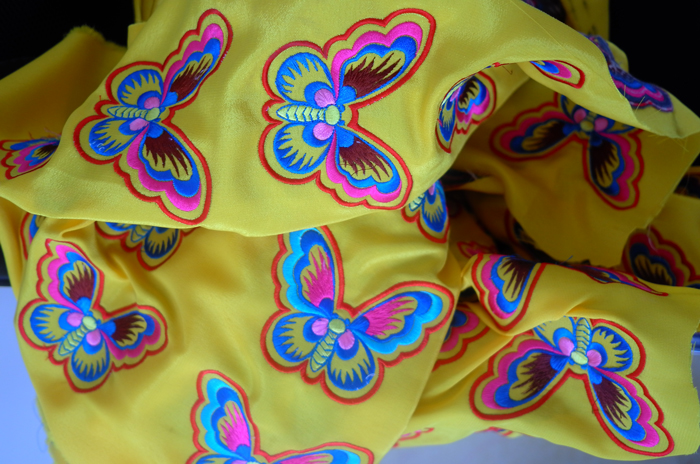
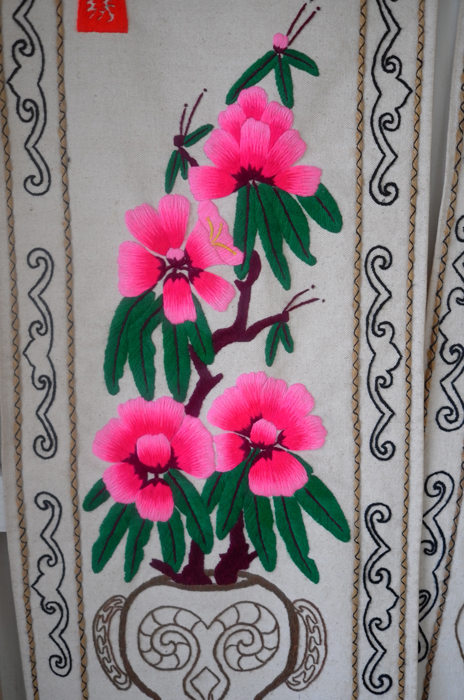
(images from festival.si.edu)
Here is the embroidery in dress form. I love how bright it is. This picture is from a showcase of Qiang embroidery at the Jinsha Relics Museum in July 2008. The event was the official start of the effort to promote and protect the Qiang embroidery tradition following the earthquake that took place a few months prior.
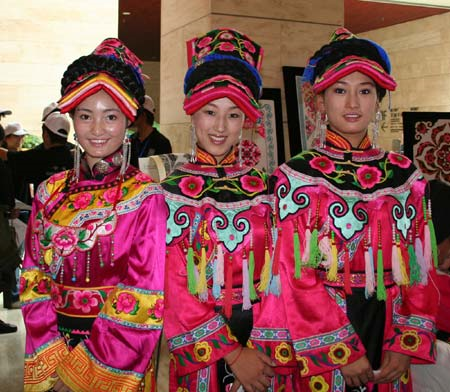
(images from news.xinhuanet.com)
Once again, Shu has brought attention to art/culture I never would have known about otherwise. And it's gorgeous! The colors are the perfect antidote to the winter blues. I just wish the description of the patterns and the meaning behind them were made a little more clear, and I'd like to hear more about Shu's involvement in helping the Qiang people – any kind of charitable action on the part of a cosmetics company should be emphasized.
What do you think?
As I was rummaging about in museum storage trying to make room for the newest batch of Shu Uemura cleansing oils (the Unmask spring 2013 collection – stay tuned!), I came across a previous collection and realized I hadn’t yet posted about it.
As you may remember, Japanese artist Ai Yamaguchi had collaborated with Shu in 2004 to create a line of limited-edition cleansing oils. She teamed up again with the company in 2005 for another set. This time, the theme was “cycle of life”, with each oil representing one of the four seasons.
We’ll start with fall, represented by the orange “Enriched” oil. I love the leaves and stylized acorns swirling about.
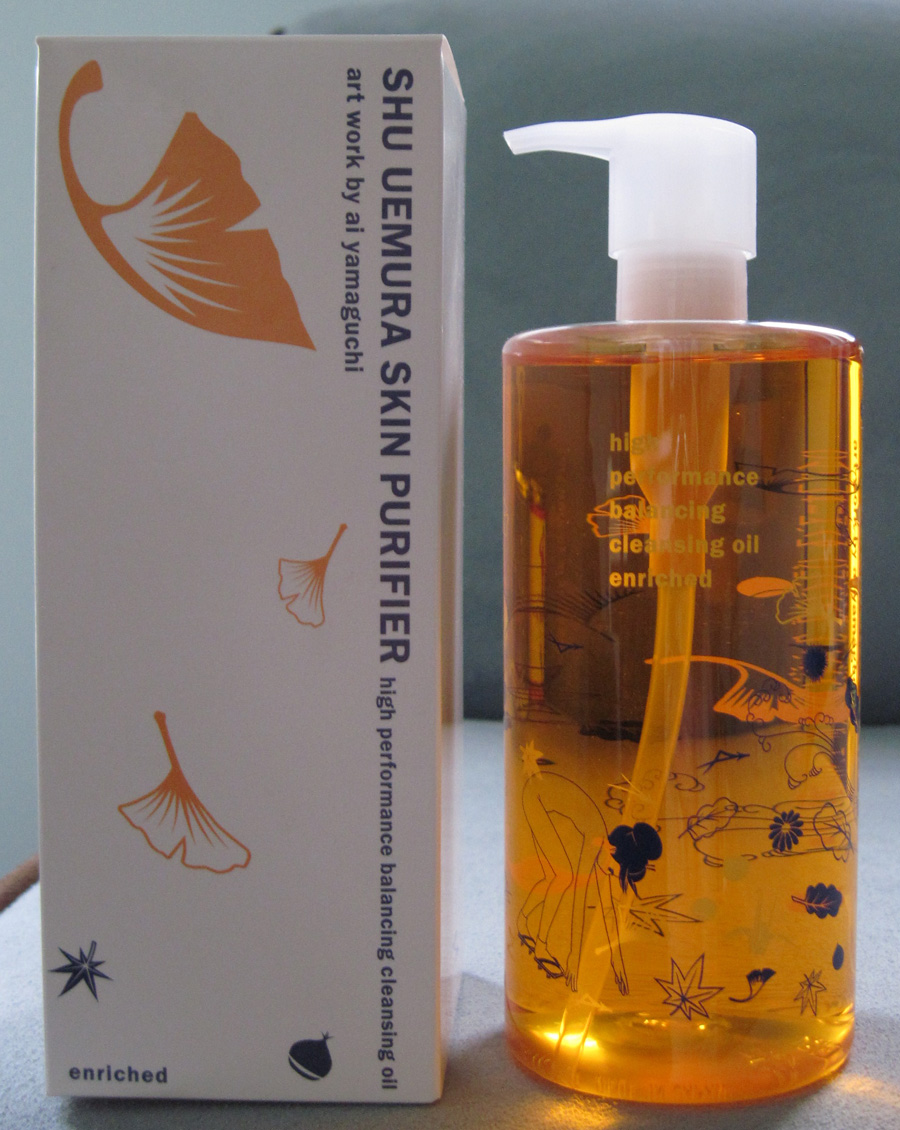
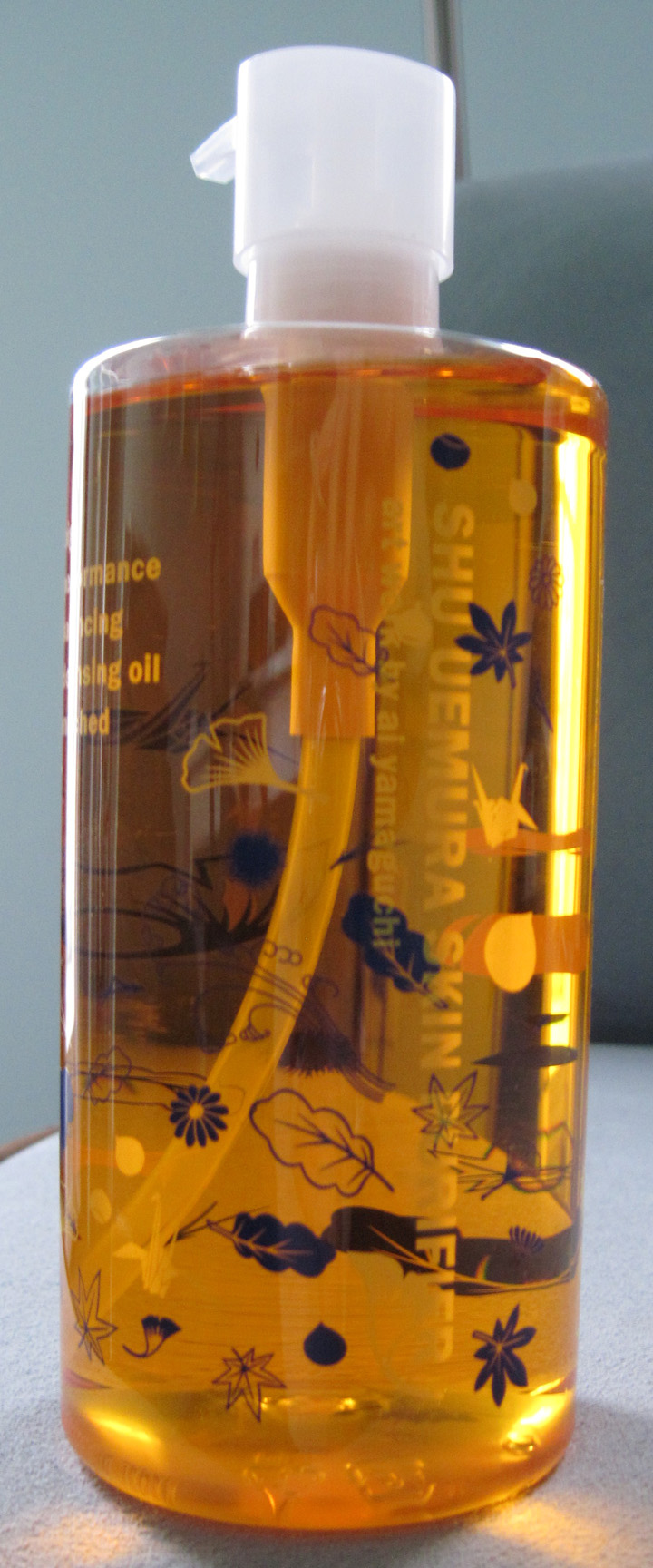
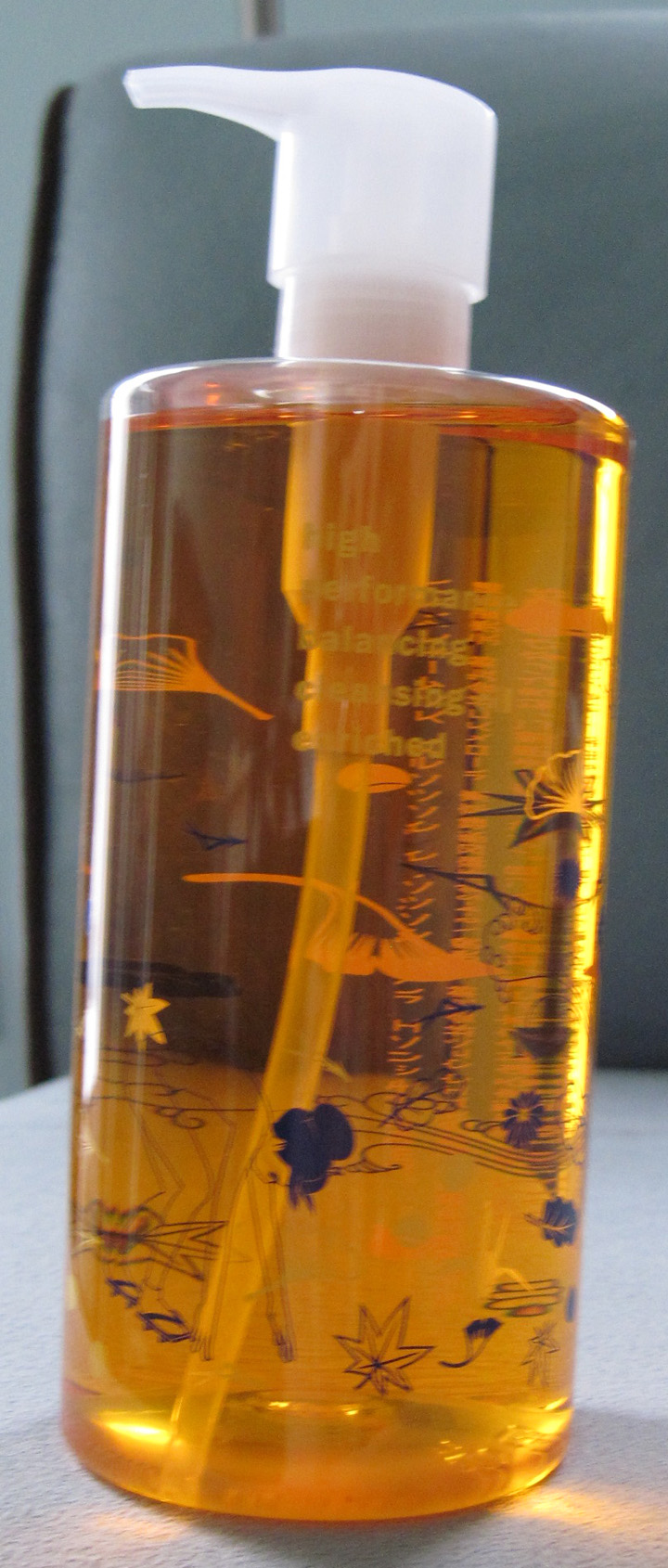
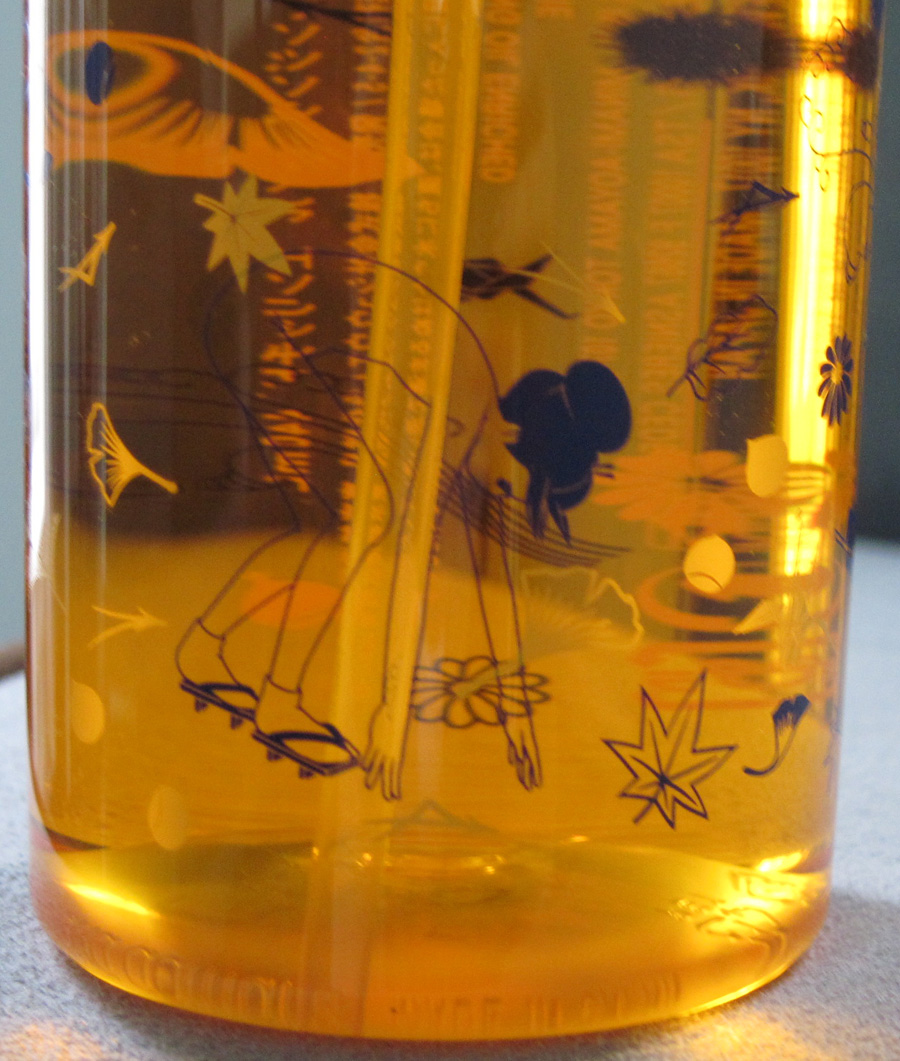
Another interesting element is the origami crane that appears throughout the bottle and box.
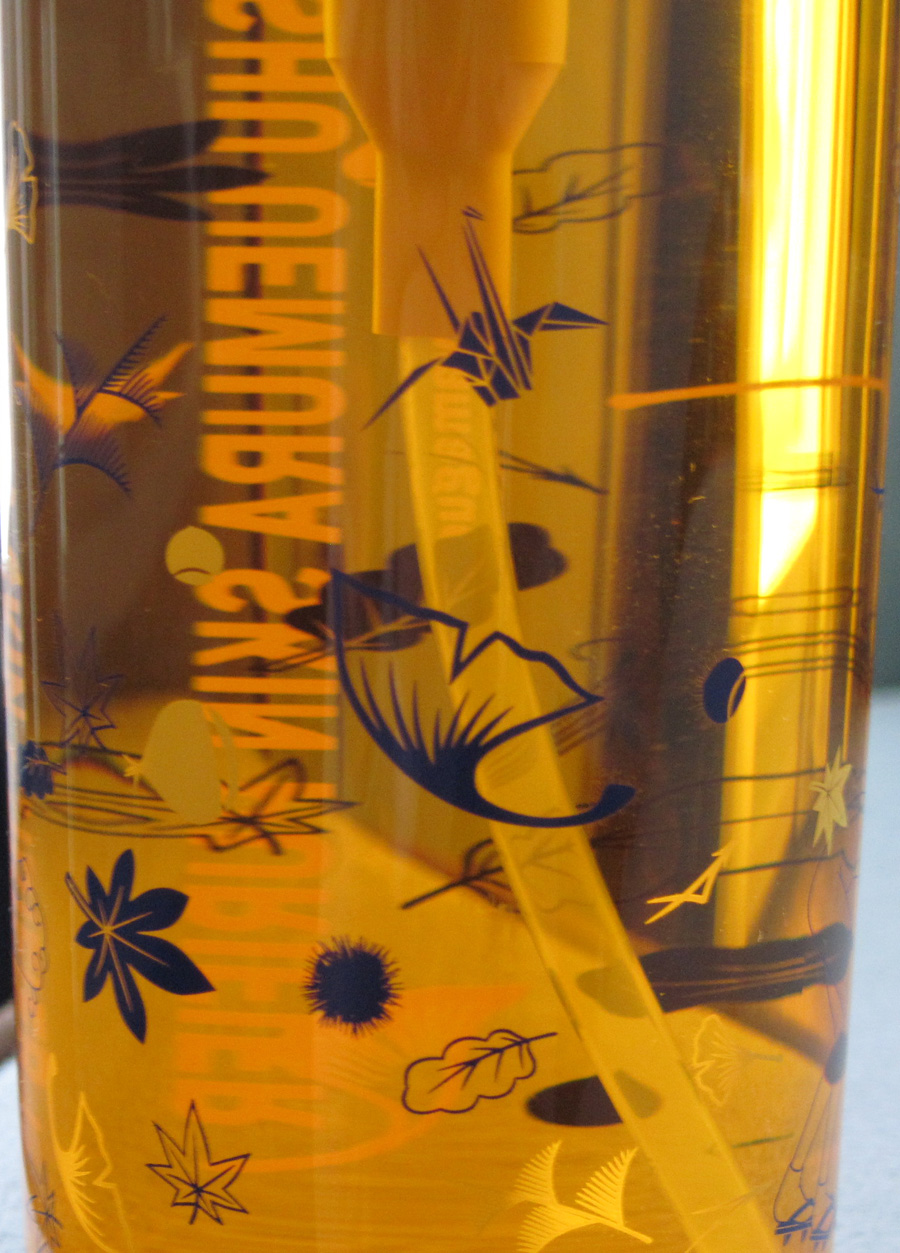

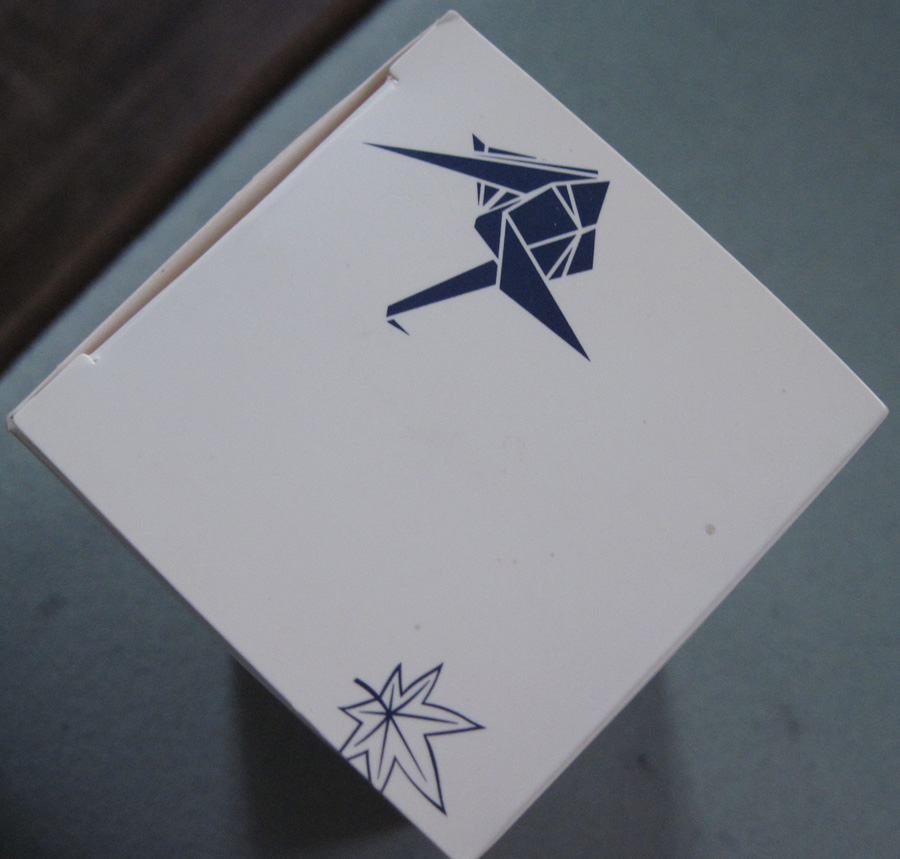
Next up is the season of winter, represented by the “Regular” yellow oil that is adorned with snowflakes and wintry blooms.
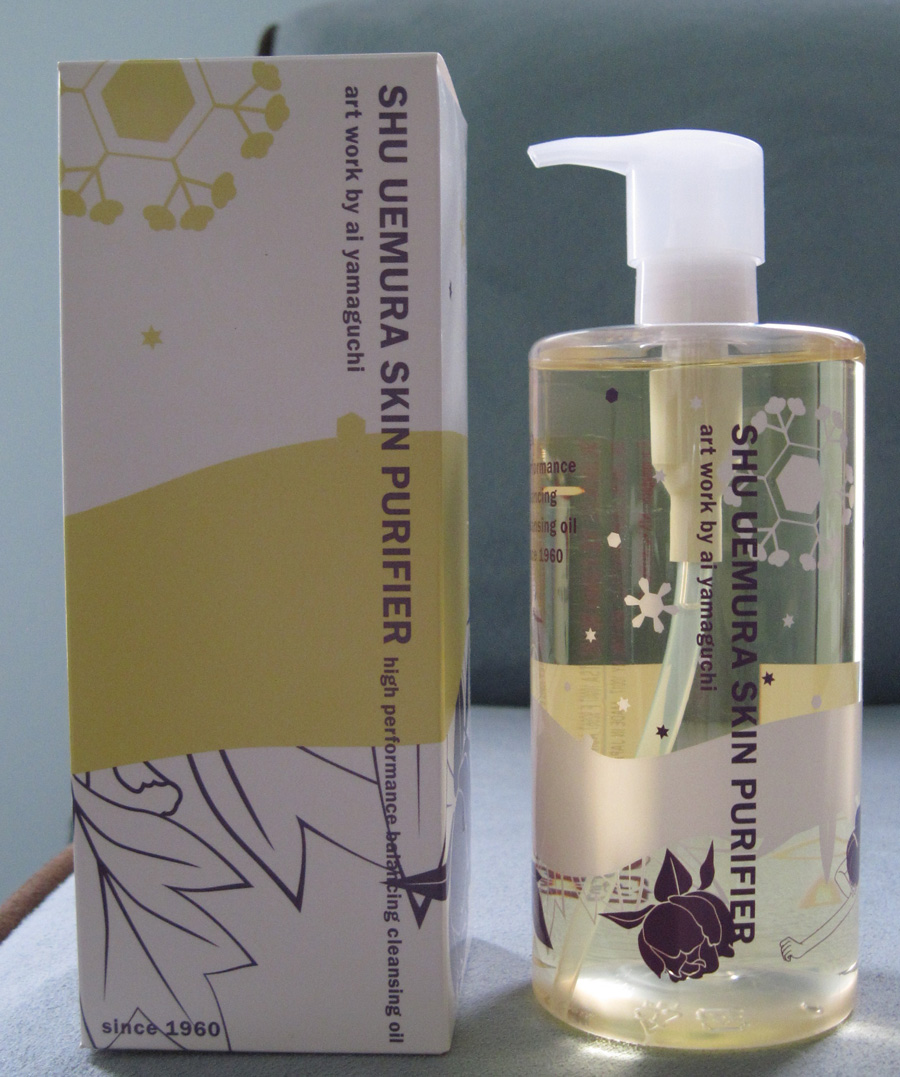
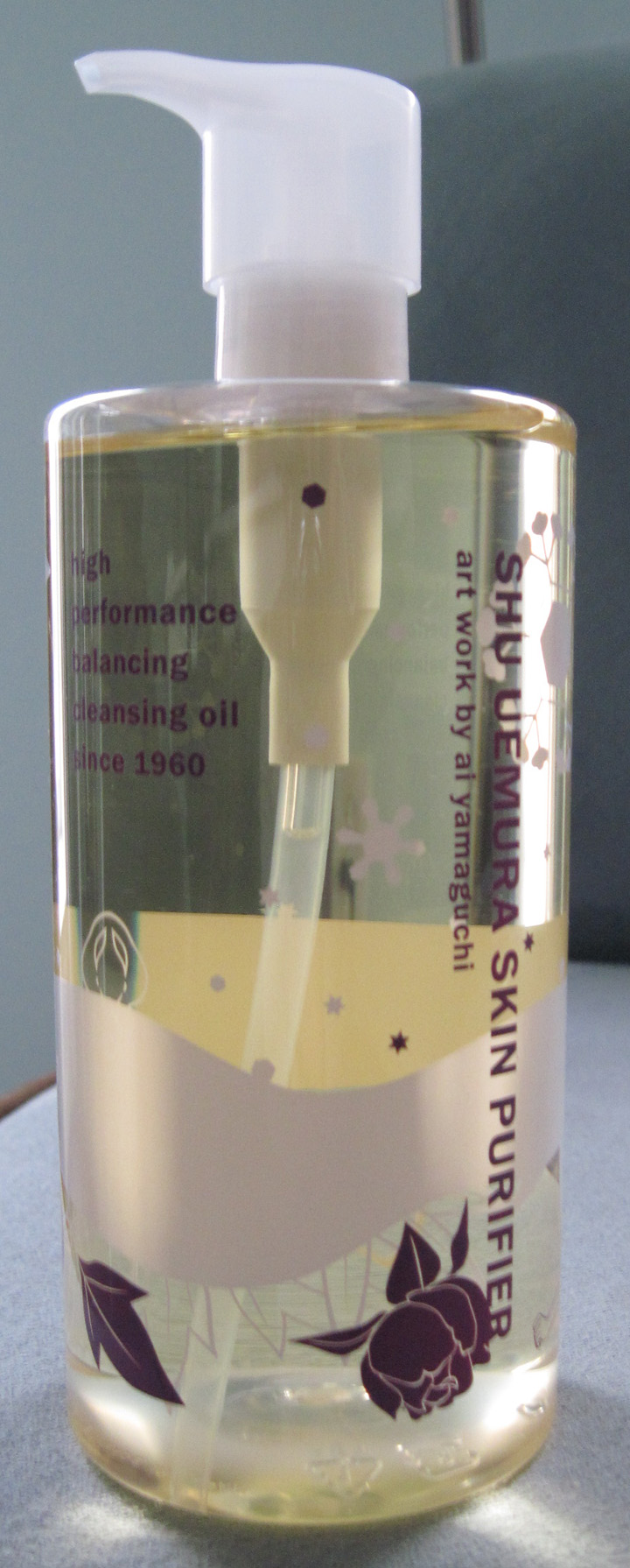
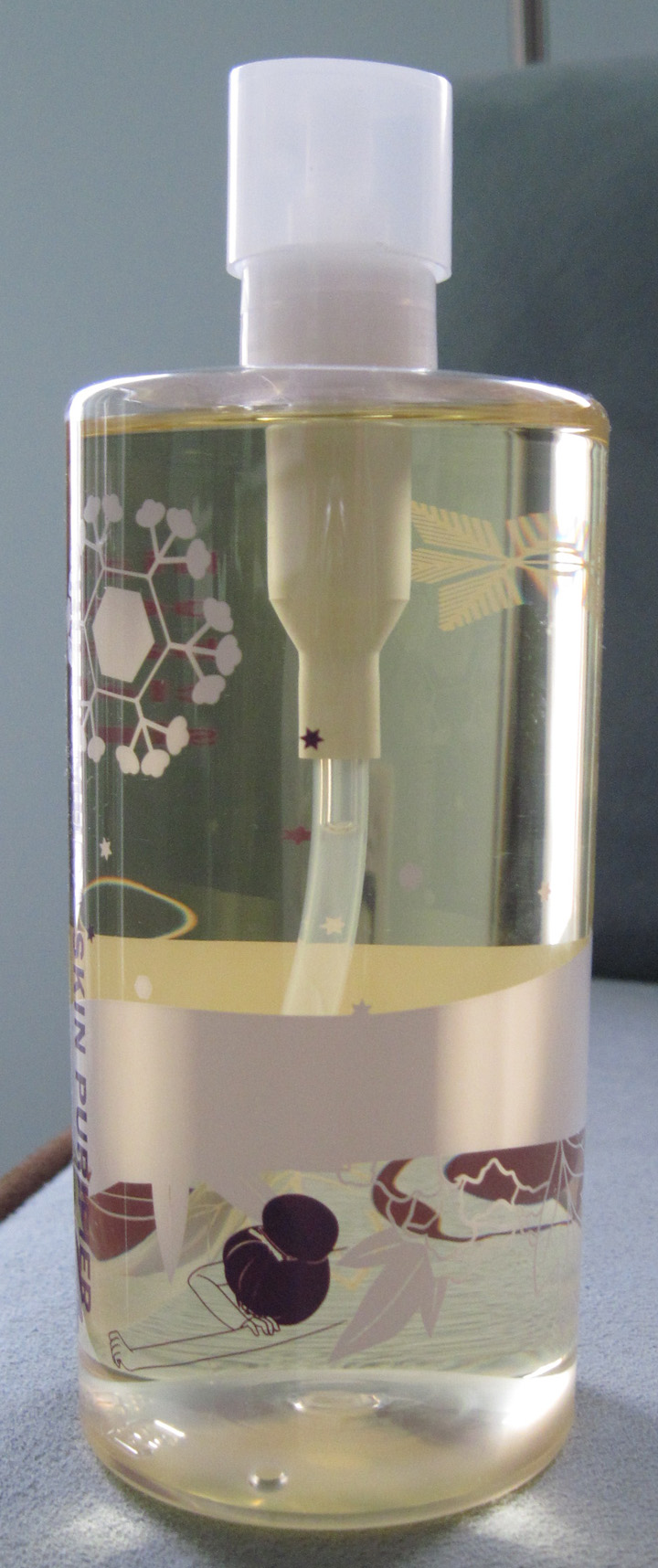
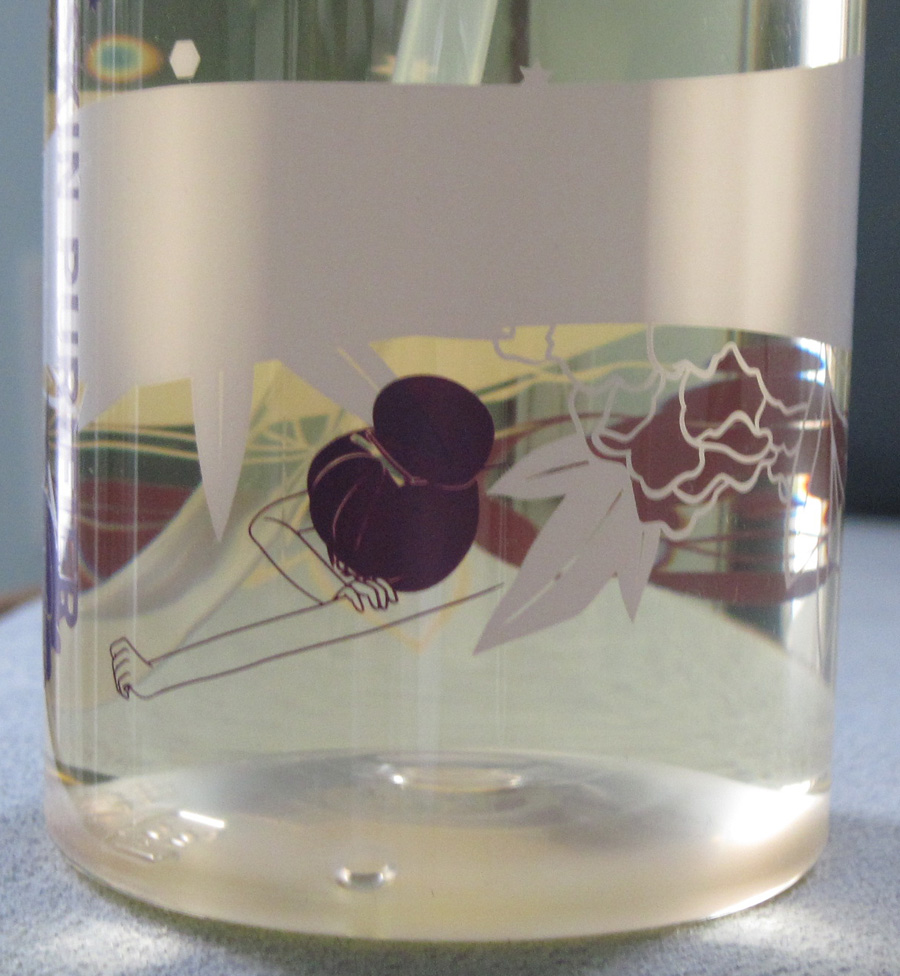
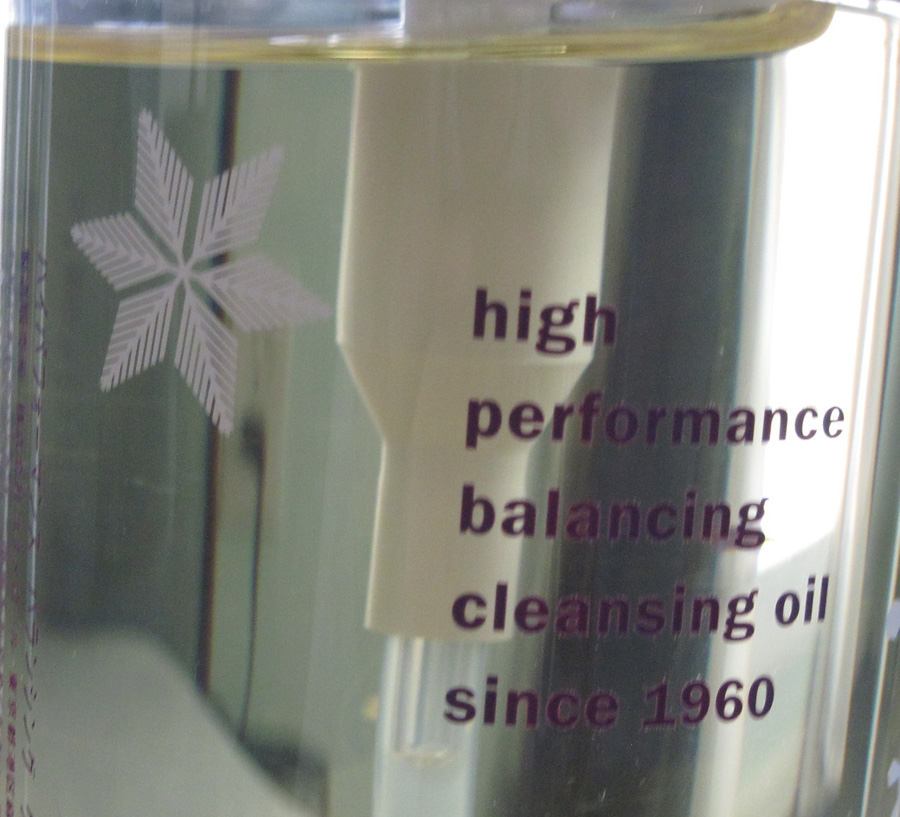
After winter comes spring, as represented by the “Light” cleansing oil with fresh green and white flowers and clovers.
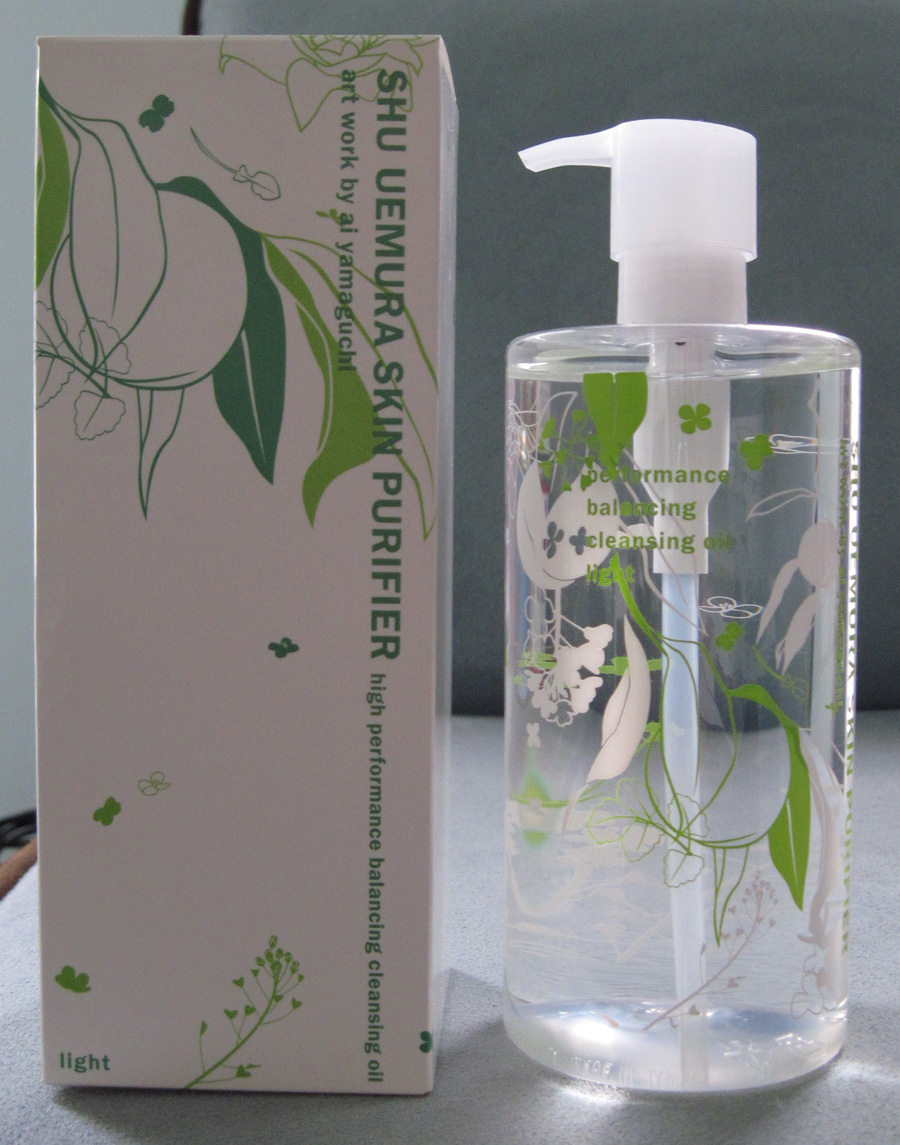
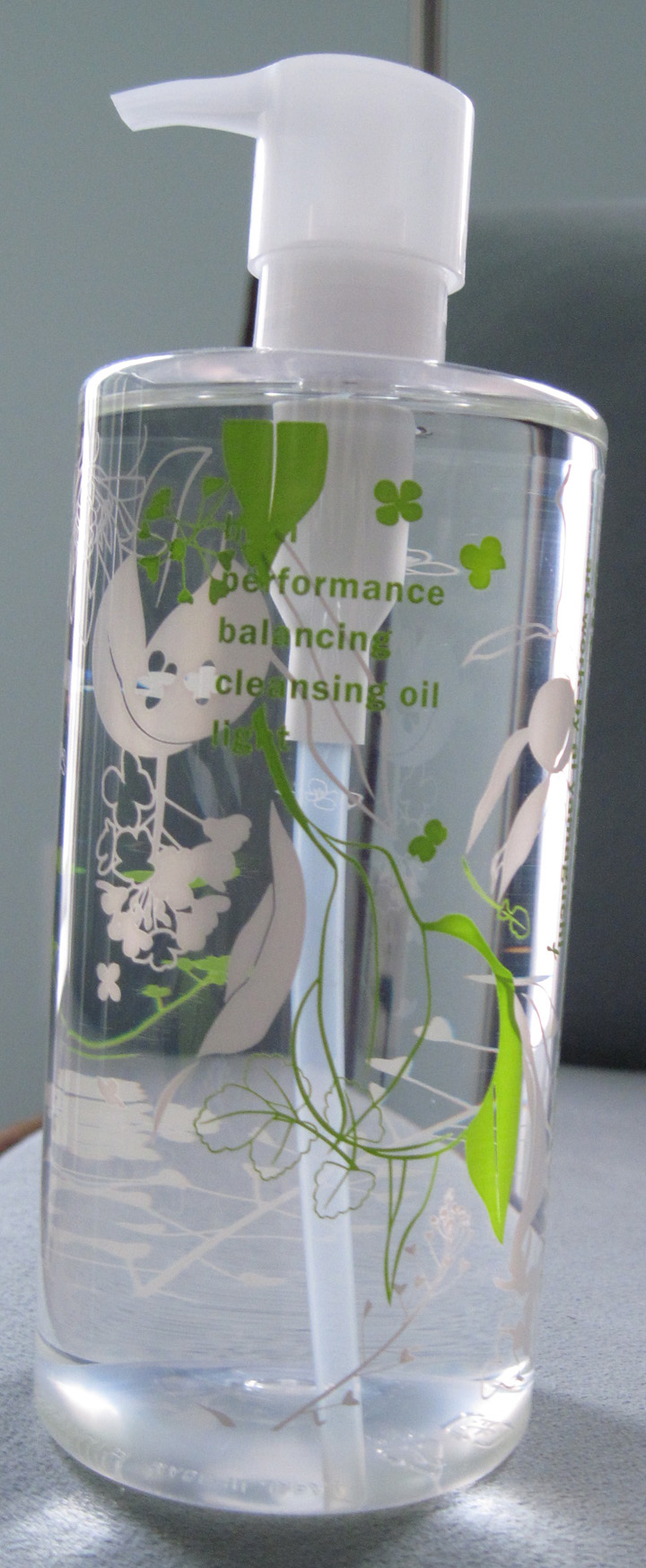
I very nearly missed the girl peeking out at the bottom of the bottle – she blends right into the flowers.
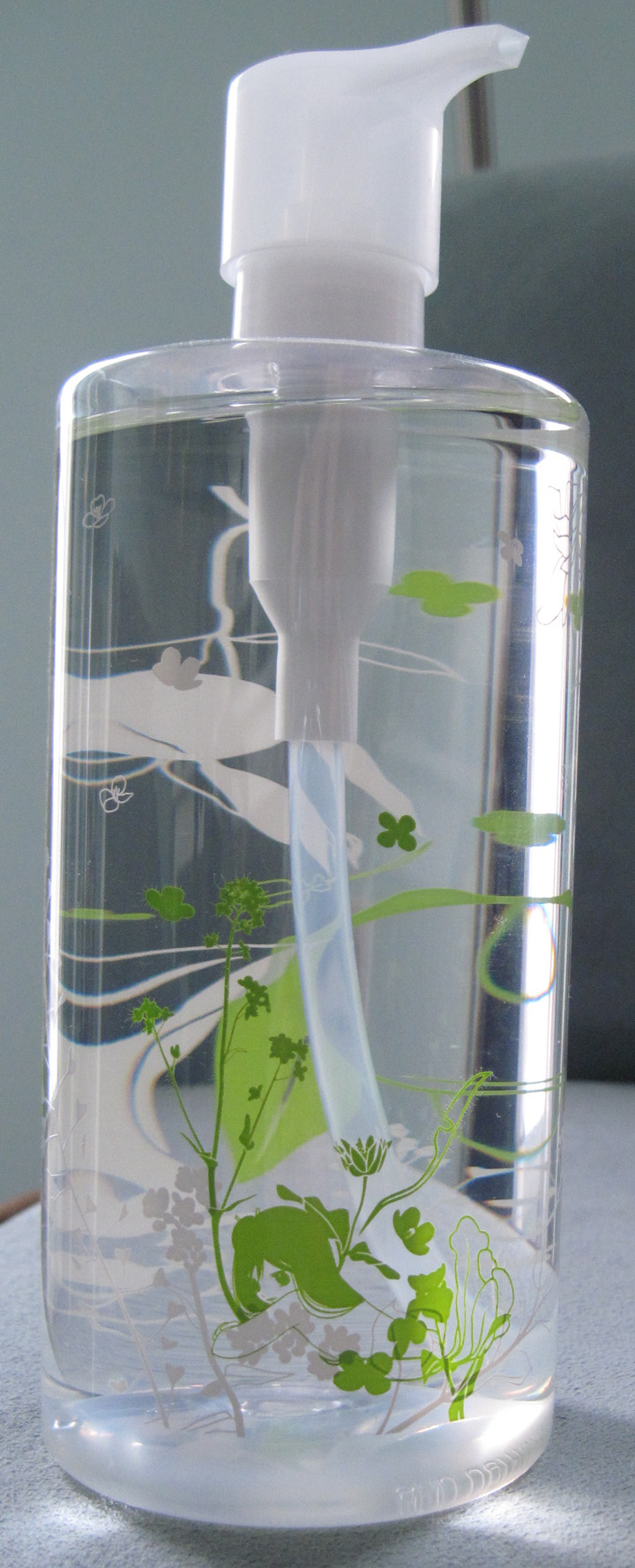
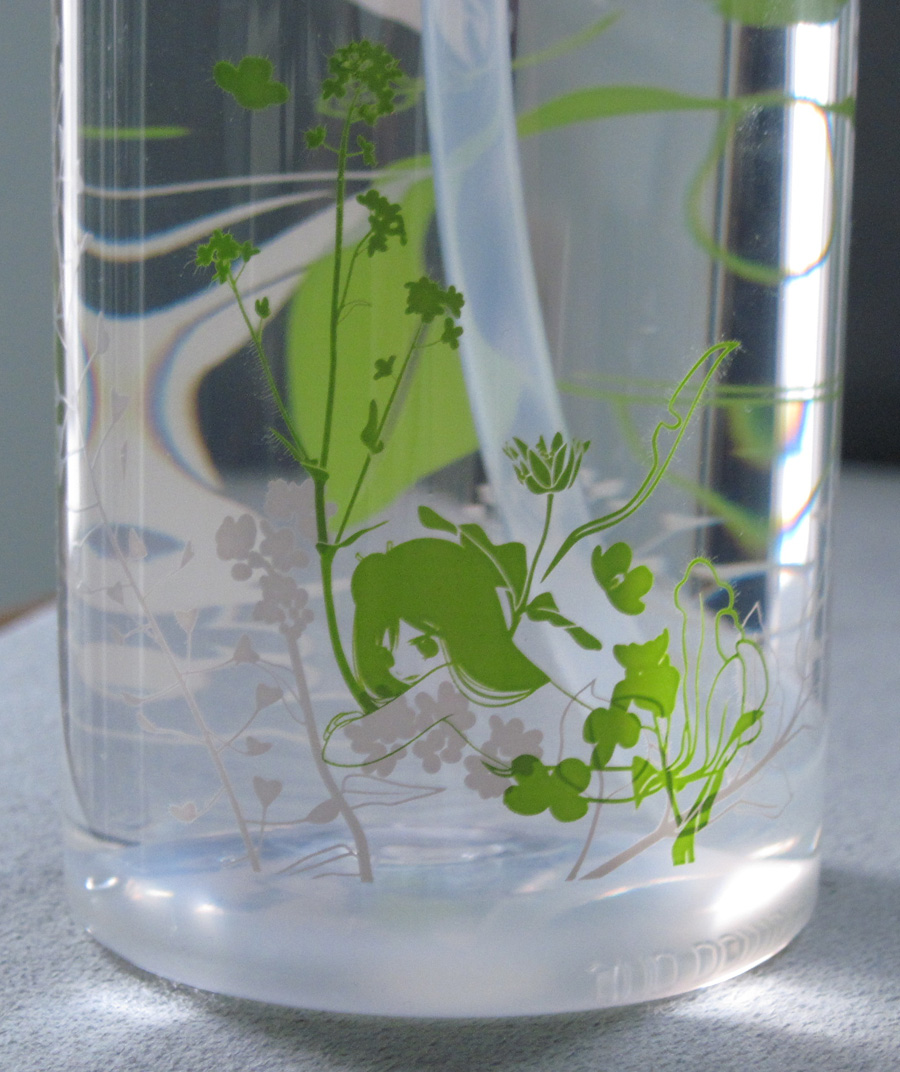
Rounding out the collection is summer, represented by the green “Premium” oil. Unfortunately it was an Asia-exclusive so I never got my hands on it (damn Shu and their refusal to bring whole collections to the States!) I really wish I had this in my collection if for no other reason than to see where the girl is hiding.
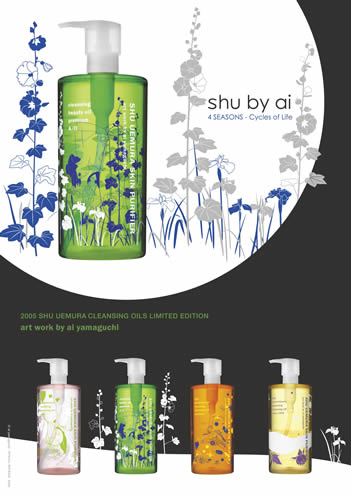 (image from ninyu.com)
(image from ninyu.com)
I have already discussed Yamaguchi’s work in my post for the 2004 cleansing oils so I won’t rehash it now. I will say that I like how you can tell these are different from the 2004 versions but still retain Yamaguchi’s signature element, albeit less prominently: the girls inspired by both contemporary anime and woodblock prints of the Edo period.
Based only on aesthetics, I enjoy both the 2004 and 2005 Yamaguchi cleansing oils equally. But thematically, I prefer the 2005 versions since much like Makeup Museum exhibitions, they center on the four seasons.
Do you prefer the 2004 or 2005 collection? And which of the 2005 oils is your favorite? Mine would probably be summer since it’s my favorite season – too bad I can’t track it down!
About two weeks ago I was very disappointed to learn that Shu Uemura was selling Japan-exclusive cleansing oils and palettes designed by Tsuyoshi Hirano. Perhaps the company's spies noted my despair at not being able to get my hands on them, because a few days later the items were available at the Shu website! Well, only two of the three oils were for sale, but as Meatloaf sang, two out of three ain't bad.
Here's the Shanghai oil:
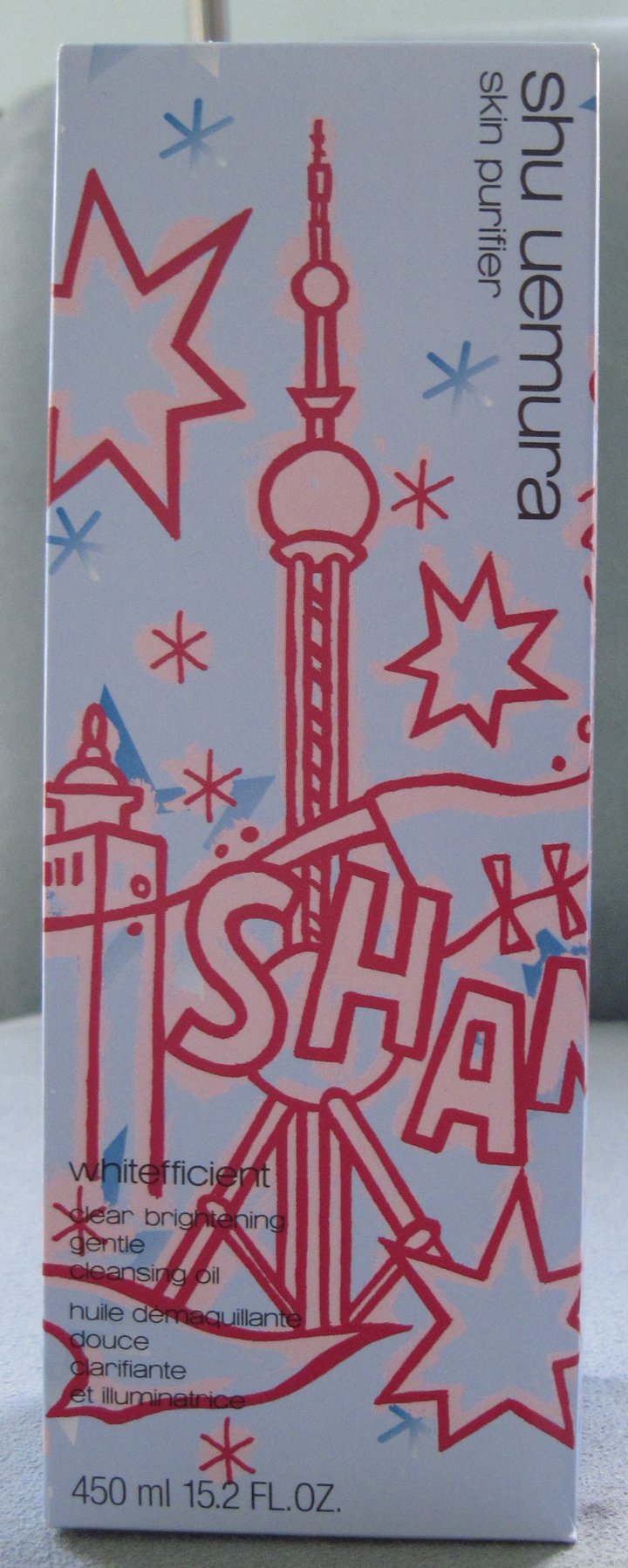
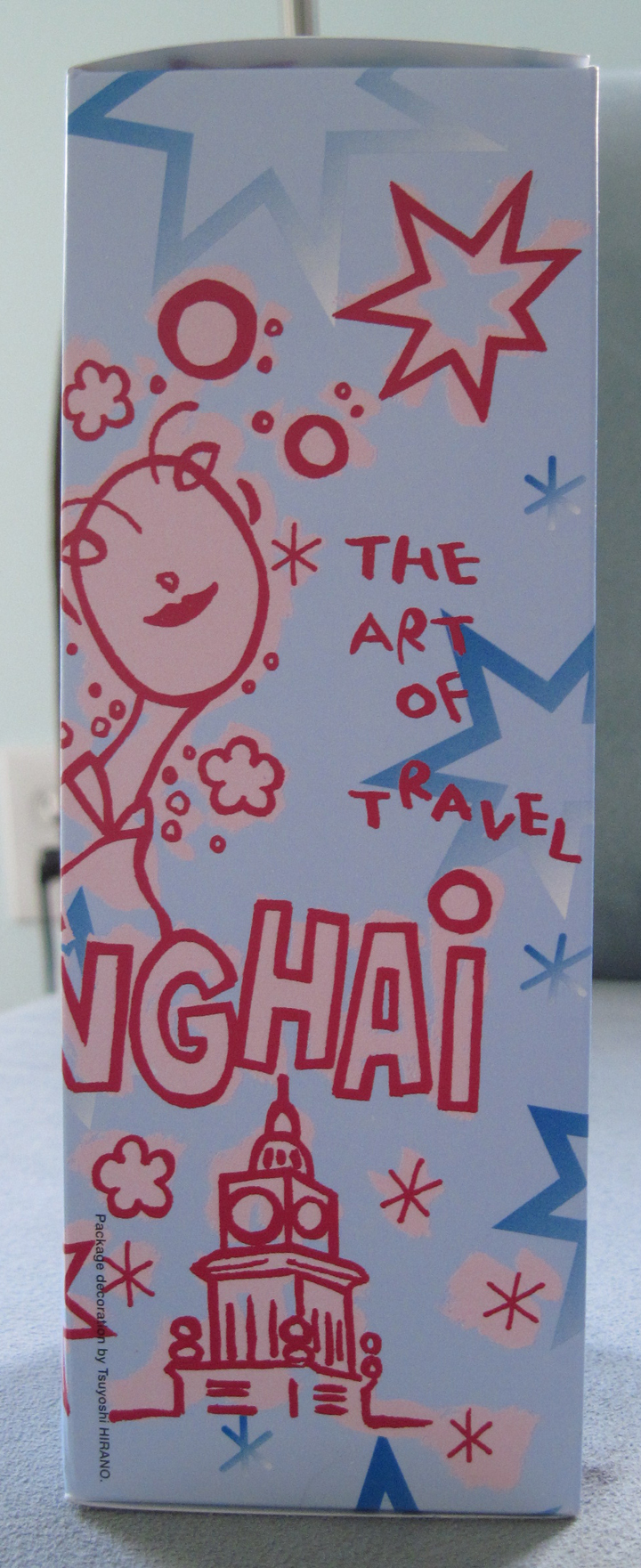
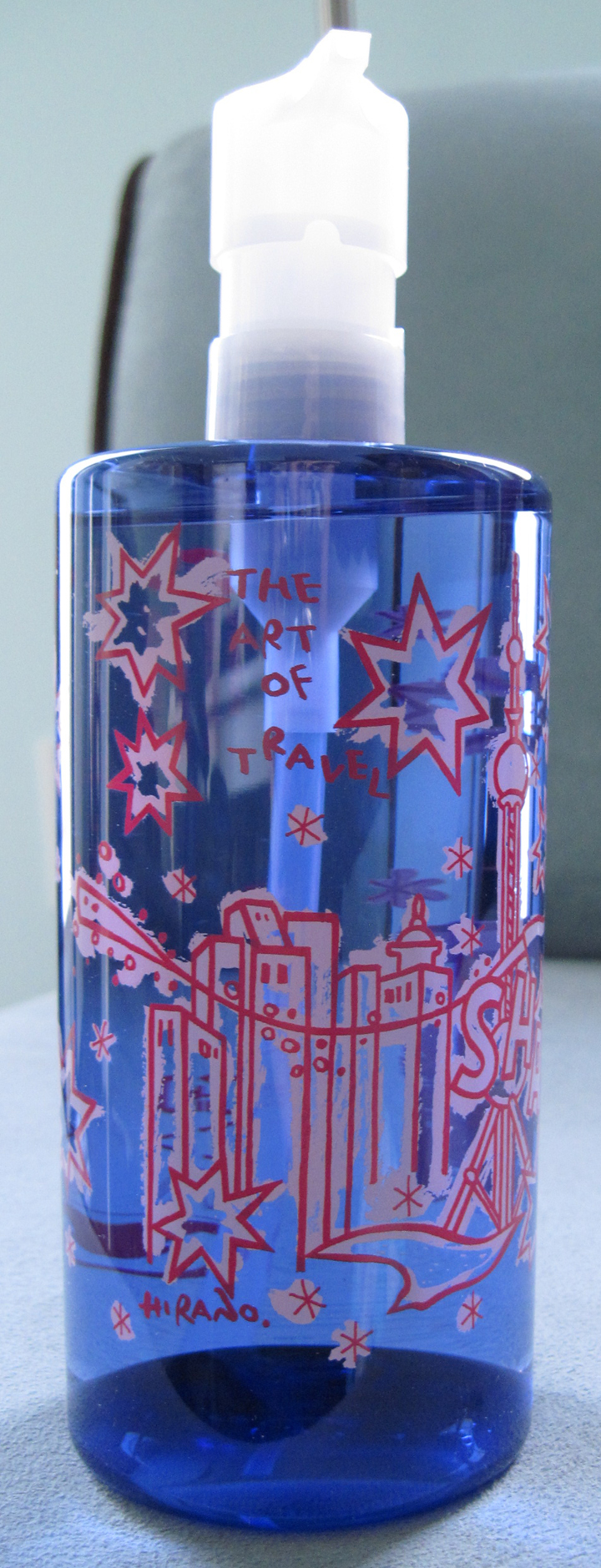
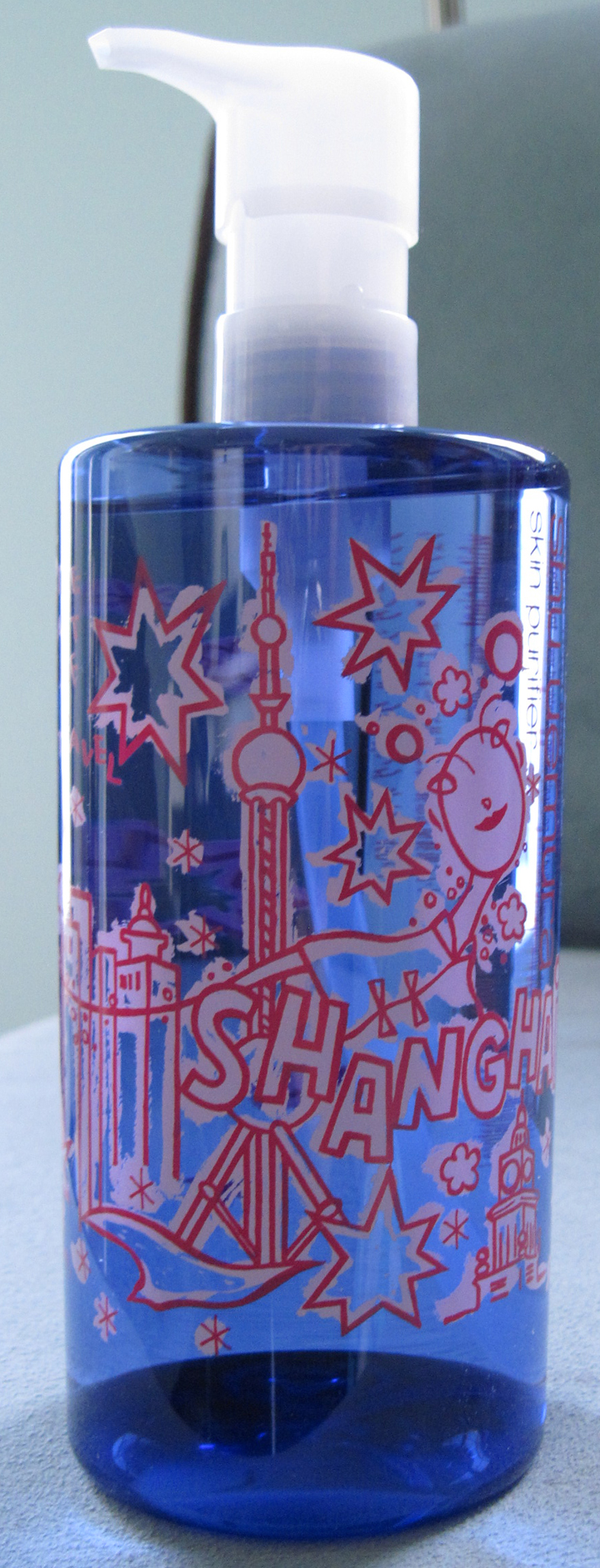
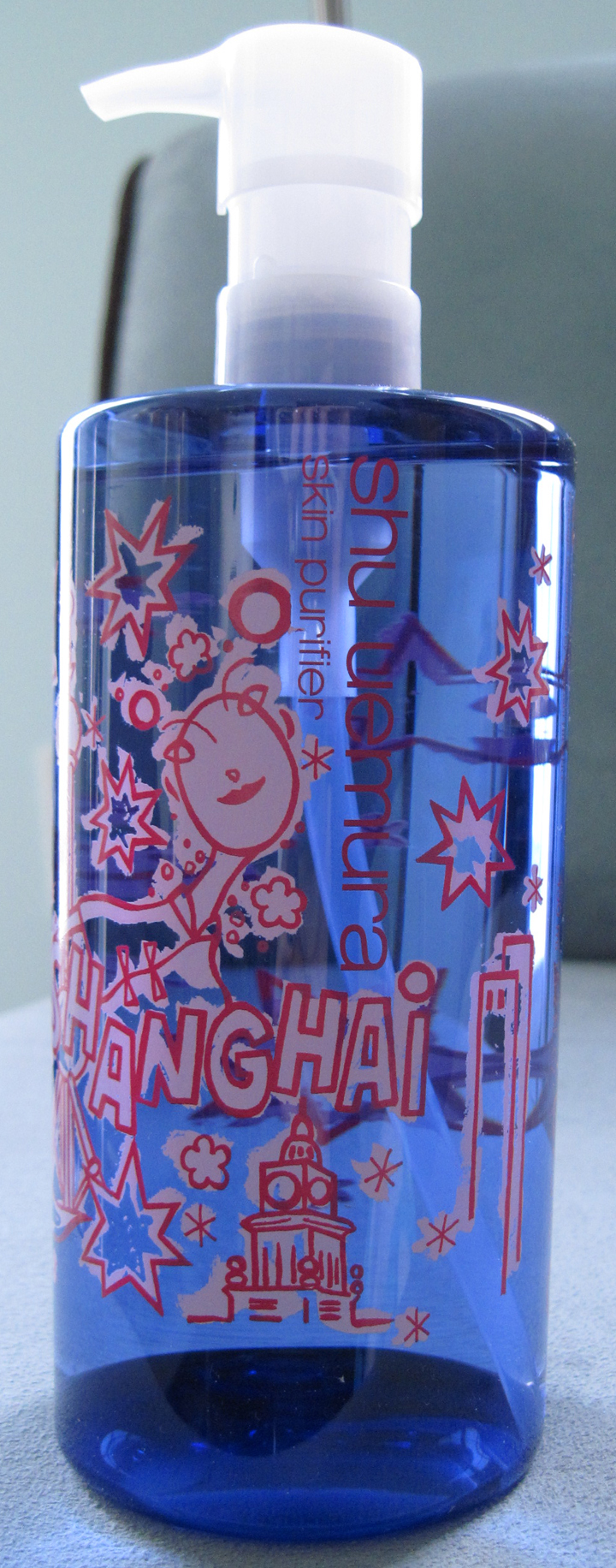
The Tokyo cleansing oil:
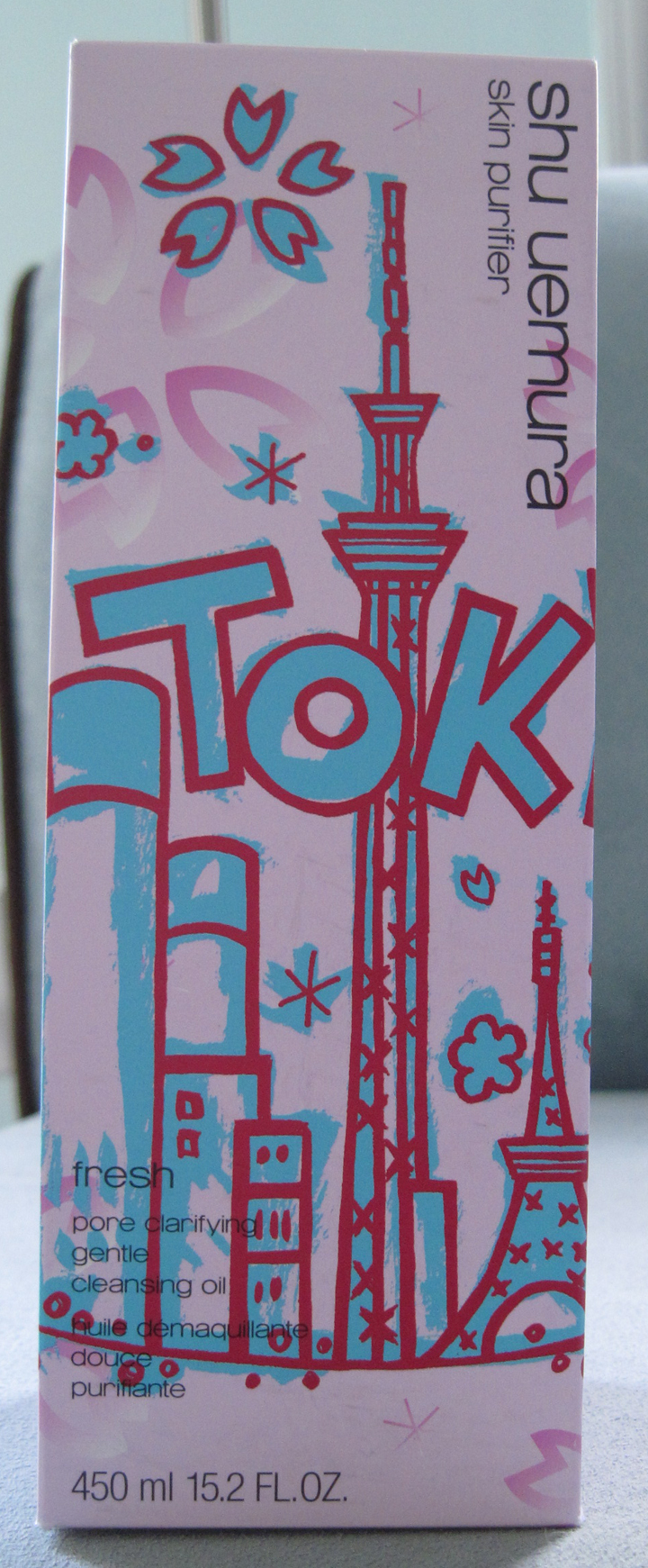
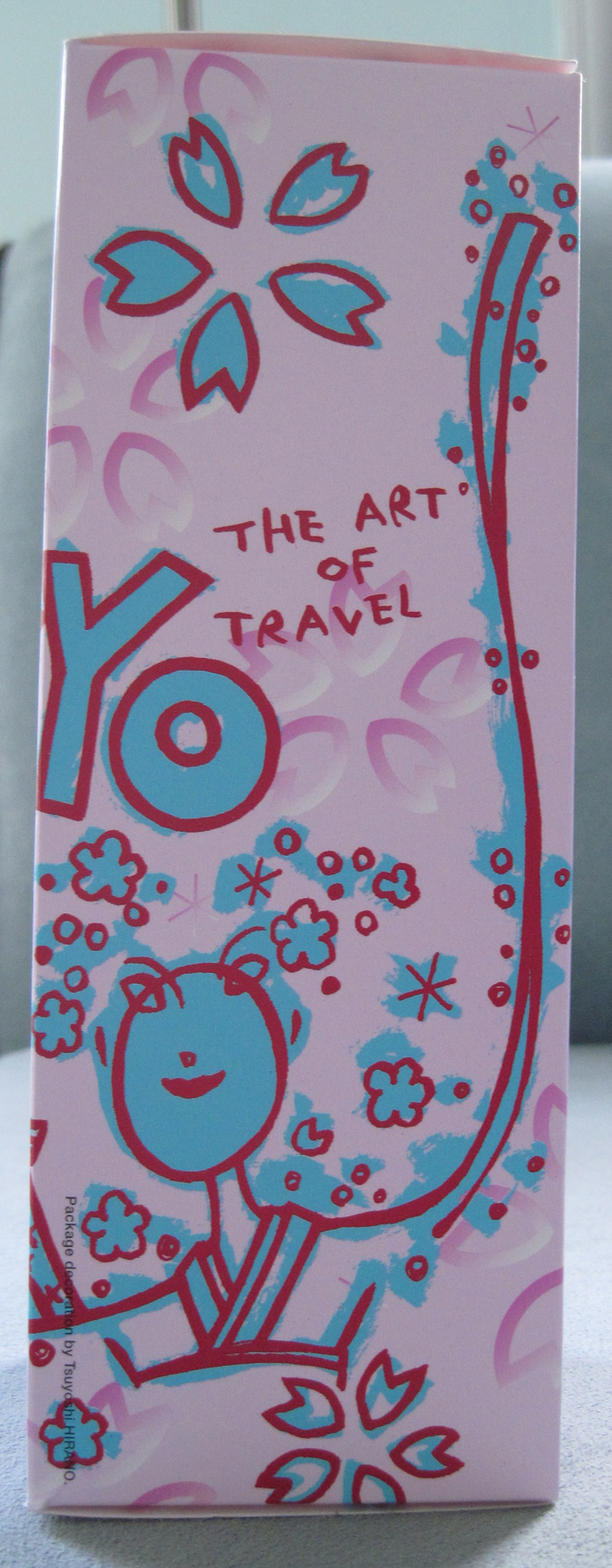
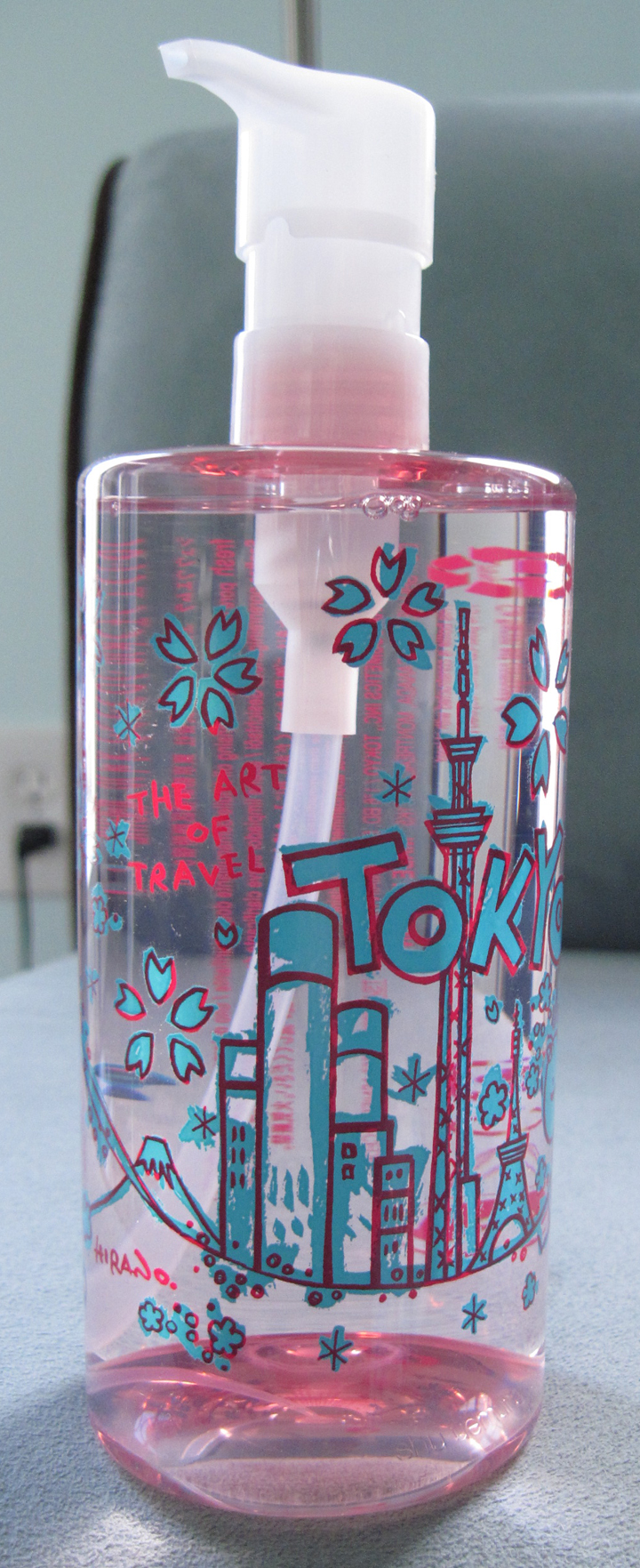
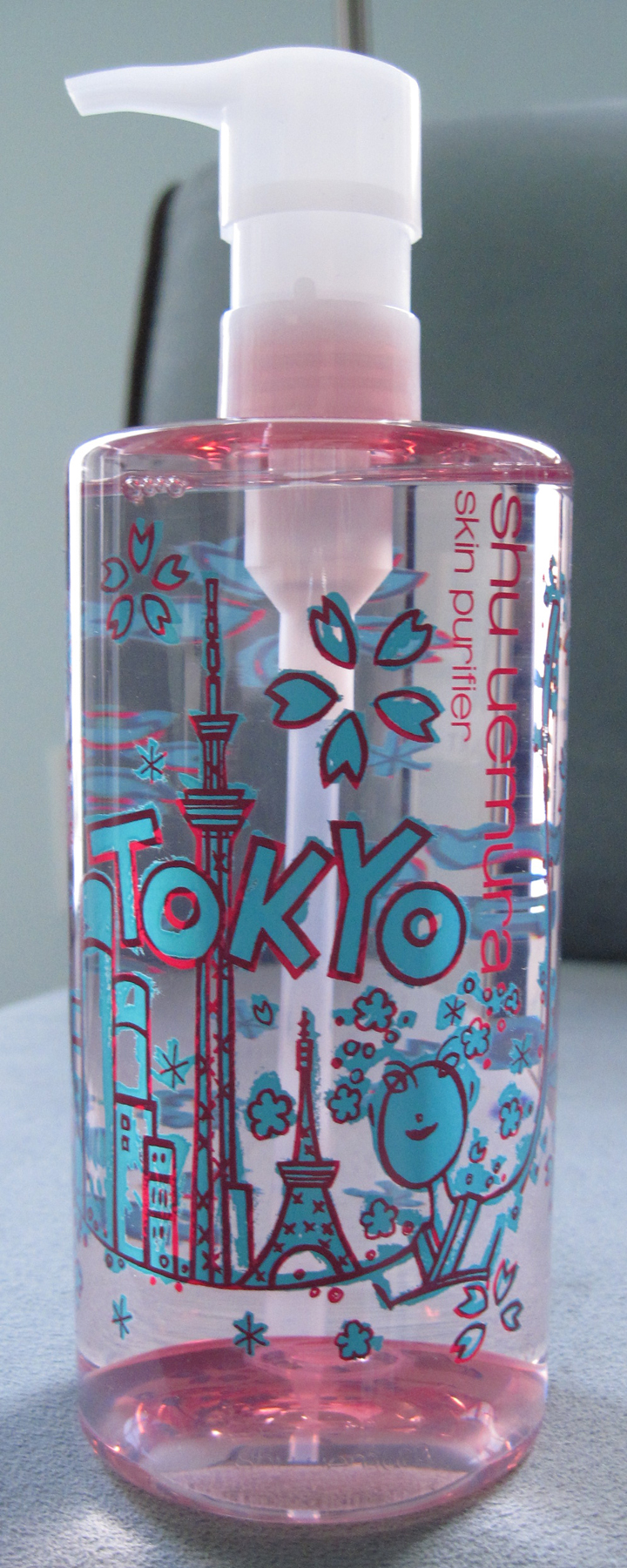
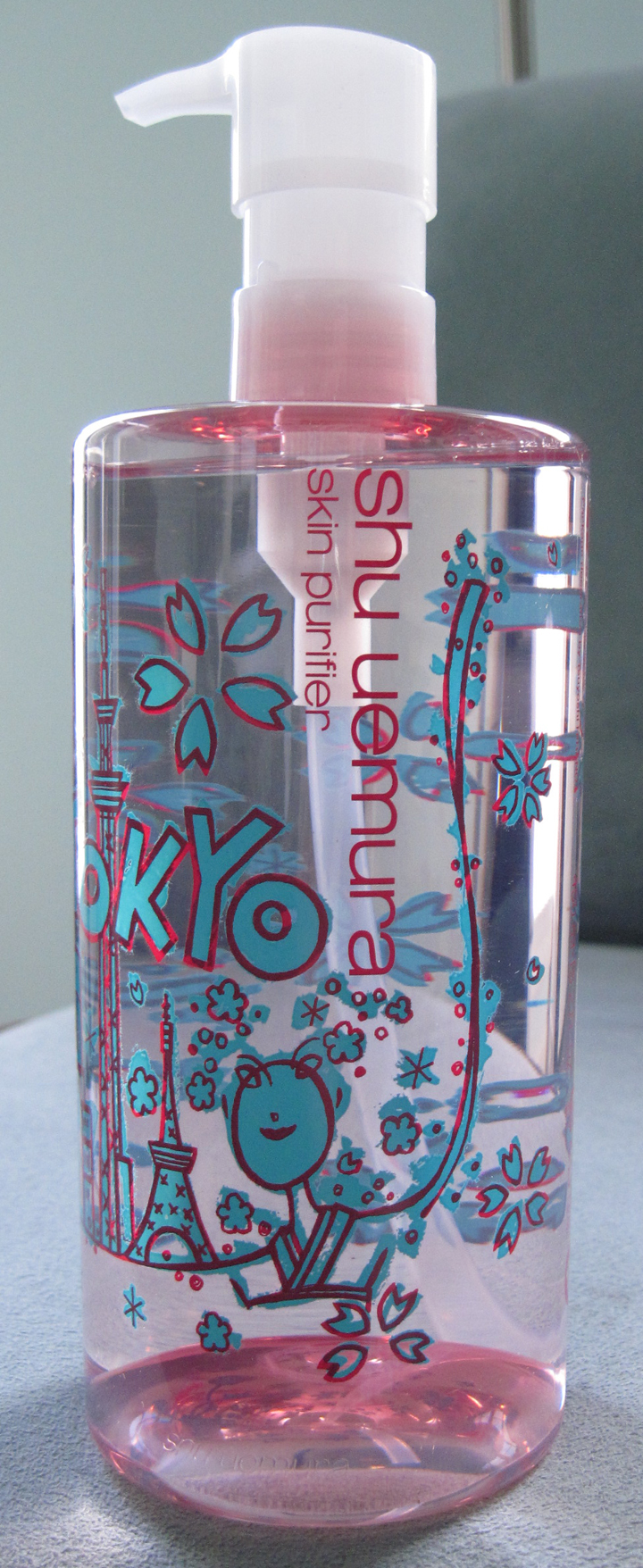
The Seoul cleansing oil was not available, but I consoled myself with one of the palettes.
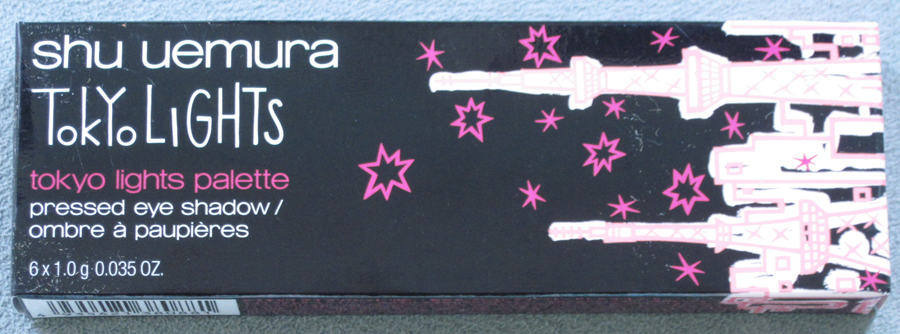
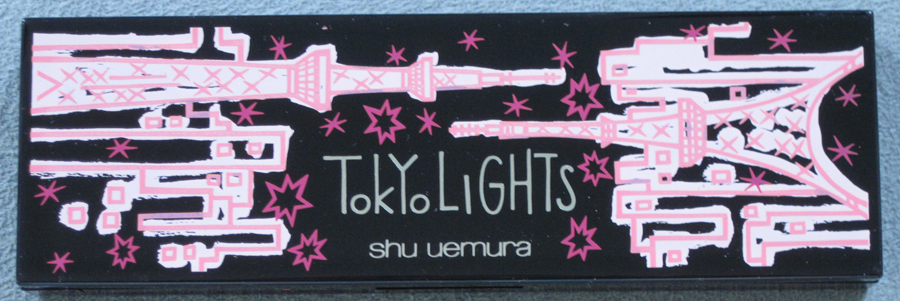
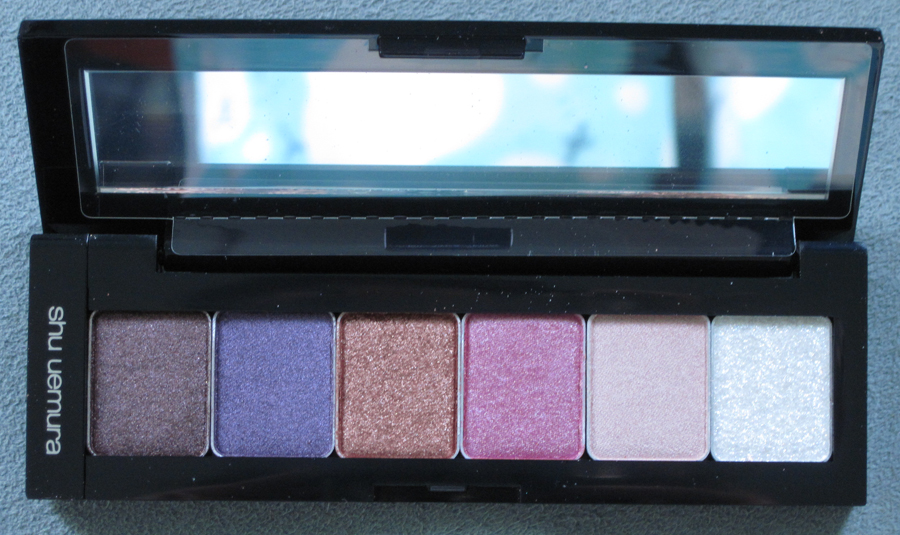
With flash:
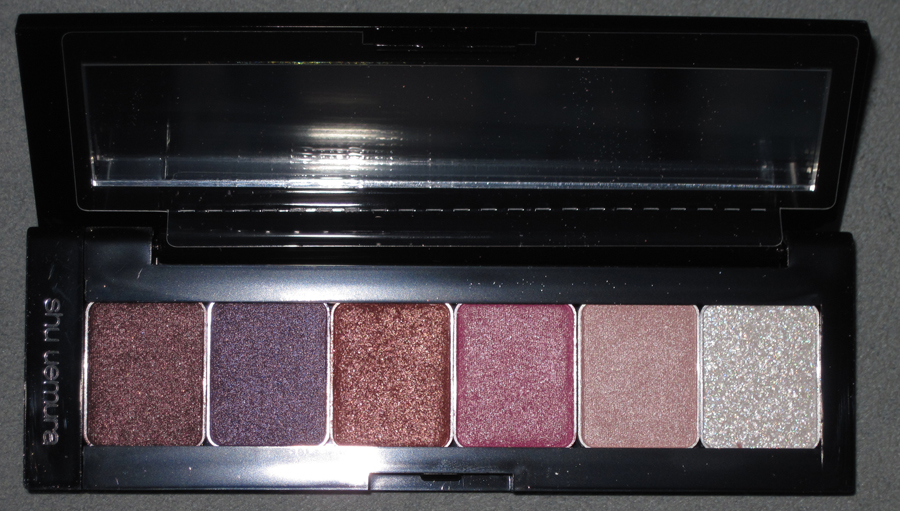
I couldn't find anything of note on Tsuyoshi Hirano – no interviews, no biography, nothing! Even stranger is that there is no mention of him at the Shu website.
If anyone can send me a link to information on the artist I would greatly appreciate it, especially since I will be posting on Shu's Unmask/Blossom Dream spring 2013 collection, which also includes Hirano's illustrations.
Shu's holiday collection is already up at their website, but I still wanted to present their fall collection. I must say this is an odd choice for fall – light pastel flowers screams spring to me rather than fall. While the makeup colors themselves are more fall-like, I'm still confused by the springy packaging. Here's what the website had to say: "Deeply colored petals of the flower symbolize eternal elegance, gracefulness and tenderness; the intrinsic beauty of a woman. soft and velvety texture of petals is gentle and beloved, like a warm embrace. when the flower fully blooms and matures, deep and rich colors and texture set peak elegance and incarnates in her face as everlasting femininity…" Sounds like the copy editor was really grasping at straws here.
Anyway, here is the Dreamy Petal palette.
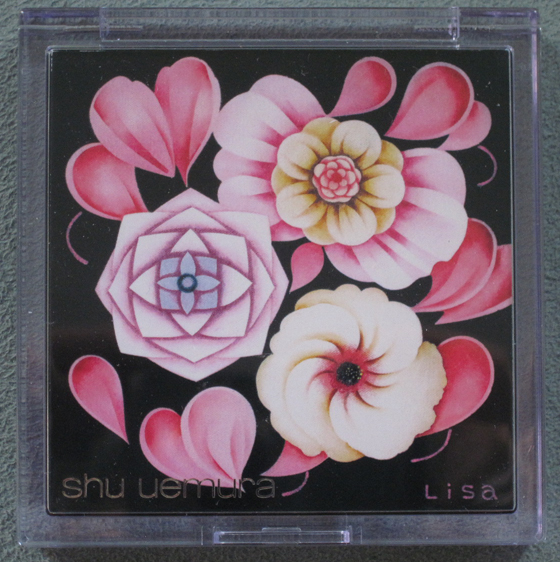
The inside:
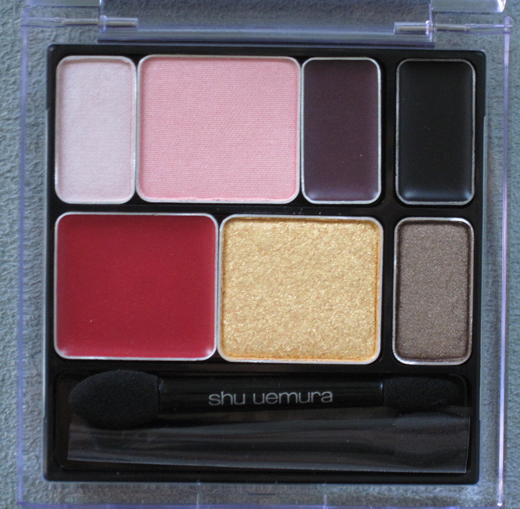
With flash:
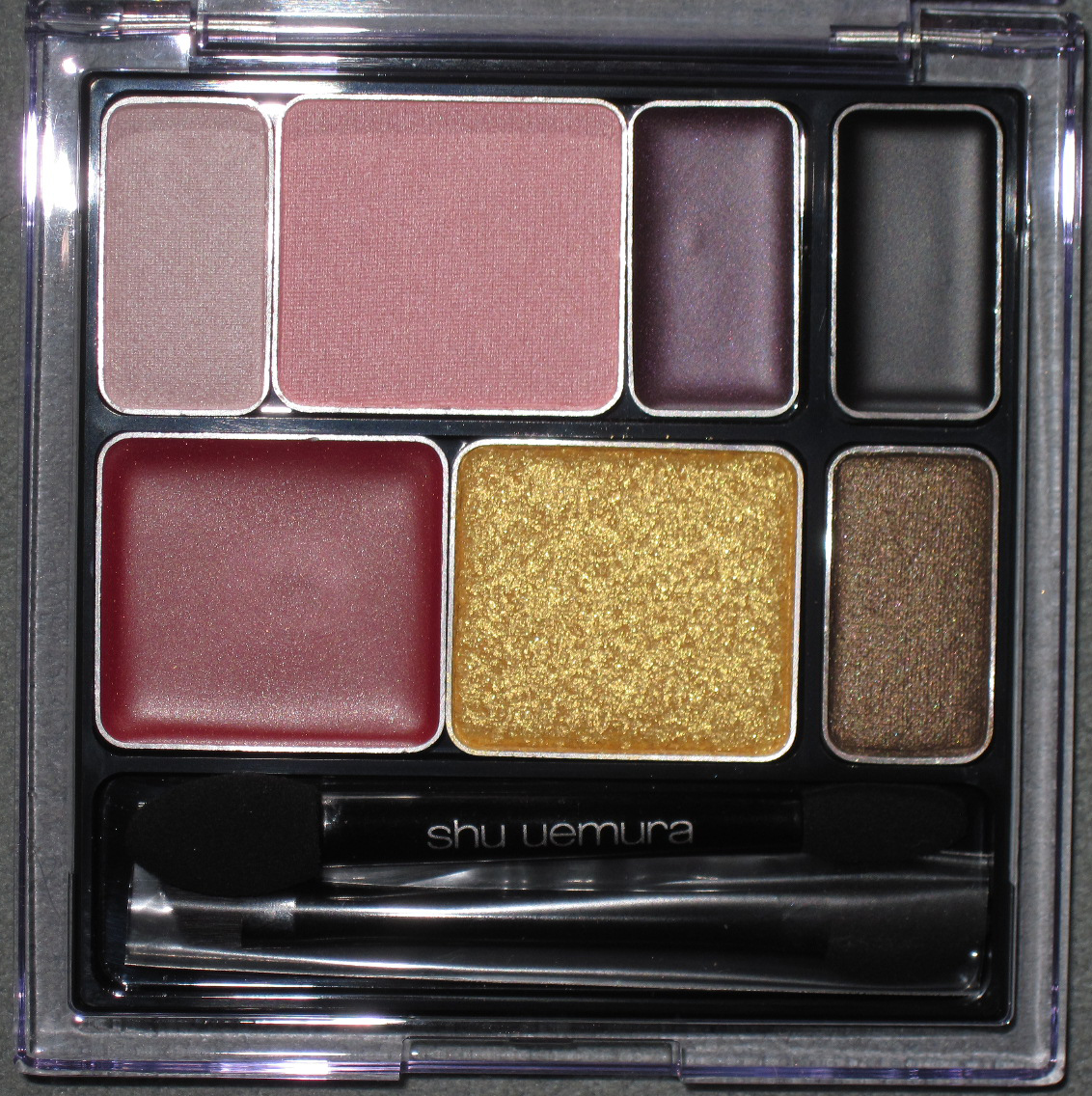
The Graceful Bloom palette:
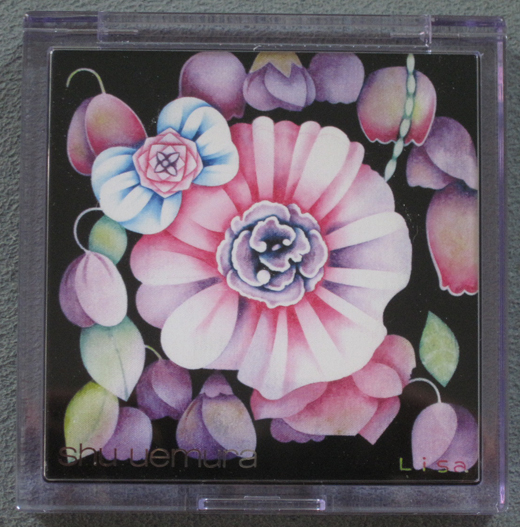
Inside:
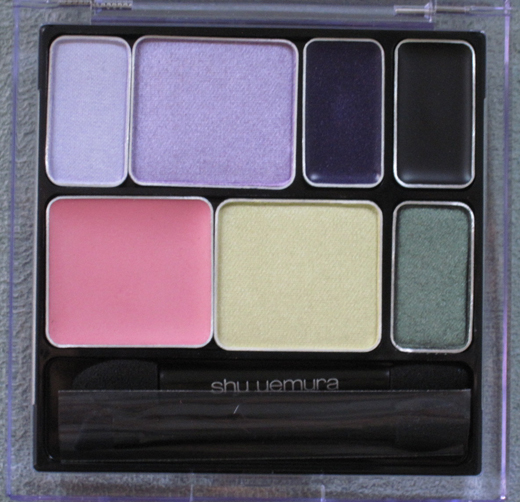
With flash:
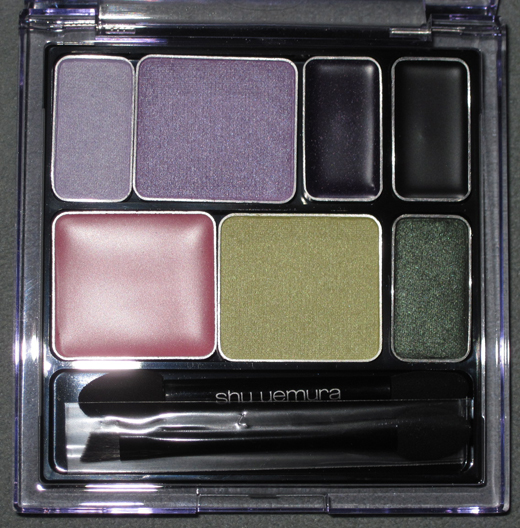
Overall, not one of Shu's most inspired collections. There was no info on who did the design, or why each palette says "Lisa" in the bottom right hand corner (so odd!) But the company will redeem itself with its holiday collection, since it's another artist collaboration as it's been for the past few holiday releases. 🙂
(The Curator is very busy/tired…Couture Monday will return next week.)
A few weeks ago I posted about Shu Uemura's latest cleansing oil, the Advanced Formula, which came with an abstract design on the bottle. I didn't know when it would be hitting the U.S. and surmised that this wasn't an artist collaboration since there was no mention of an outside artist on the bottle or box. This morning though I received an e-mail from the company announcing the U.S. release of this oil and they revealed what that design is – it's calligraphy from Mr. Uemura himself! Here's my picture again:
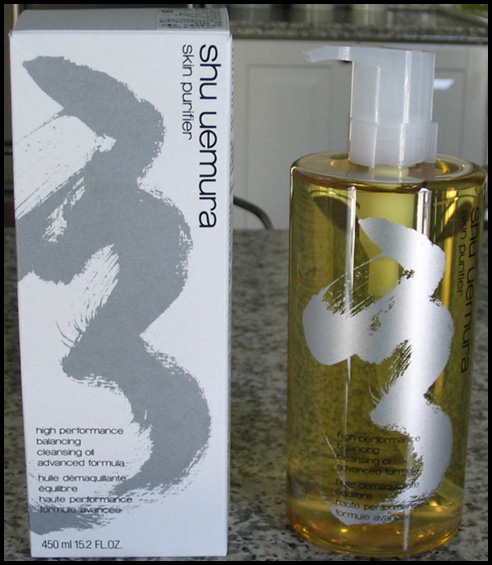
Silly me, it should have dawned on me that it was calligraphy, and calligraphy from Shu himself – that's very fitting. But trained in Western art that I am, I thought it had more of an abstract expressionist feel to it. In any case, I'm happy to find out what it was!
In late 2007 Shu Uemura teamed up with Toy2R to sell Qee figures as a gift-with-purchase – buy a cleansing oil and get a free Qee! Each one is color-coordinated to a particular cleansing oil (the green is for the premium oil, pink for the fresh oil, orange for the enriched and yellow for the regular oil.)

But what exactly ARE Qees, you ask? They're usually small (2.5 inch) vinyl figures that can be displayed or put on key chains, taking the form of bears, dogs, cats, monkeys or bunnies. According to the Toy2R website, the company is "breaking down the boundaries between product design, art and graphics" and "instilling contemporary designer art into the vinyl toy market." Qees first debuted in 2001 and are sold in series based on a particular artist's design scheme. The company also deals with other businesses – Qees have been produced for Adidas, Benetton, Starbucks and Target.
The Shu Uemura Quees perfectly represent the oils in that they match the color to each one, and also the swirly pattern seen on all parts of the figure is reminiscent of how these somewhat viscous oils move and flow in their bottles. As with Shu's collaboration with Genius Party (which I posted about earlier), it's a puzzle as to why the company decided to use toys to promote their most iconic beauty product. Most cosmetic companies include a small makeup pouch and/or other beauty items, but Shu chose…designer toys. It's a strange but ingenious way to break the beauty industry mold.
Oops, they did it again! That is, Shu Uemura has released a new advanced formula cleansing oil, and in honor of its launch created a limited-edition, Asia-exclusive bottle. It’s not clear when the advanced formula will hit the States. But what’s bothering me more than that uncertainty is the fact that I don’t know if an artist collaborated on the bottle’s design.

It’s impossible to tell whether this is something the company has come up with or if an outside artist was brought in. (As mentioned earlier, Shu has a history of working with artists on designs for the cleansing oil bottles.) I’m guessing this is something the company did itself since there’s no mention of an artist on the bottle or box.
The abstract flourish is reminiscent of some of Franz Kline’s work, especially Chief (1950).
I think it’s fitting that Shu chose an abstract design for this product. The idea of a product having a new “advanced” formula is difficult to express visually, so a simple abstract brushstroke in silver works well in terms of signaling the release of a new and improved product.
In the past, Japanese makeup company Shu Uemura collaborated with artists John Tremblay and Ai Yamaguchi to create limited-edition packaging for the company's best-selling cleansing oils. Shu is continuing their tradition of interesting skincare packaging with a Japan-exclusive release in honor of the 25th birthday of their flagship boutique, a collaboration with the producers of the anime anthology Genius Party.
Genius Party was released in July 2007 and consists of 7 short anime films. The bird-man and smiling egg-like characters on the bottle are taken from the opening film and namesake of the anthology, which was directed by Atsuko Fukushima.
This character is from the 3rd movie in the anthology, titled "Deathtic 4" and directed by Shinji Kimura.
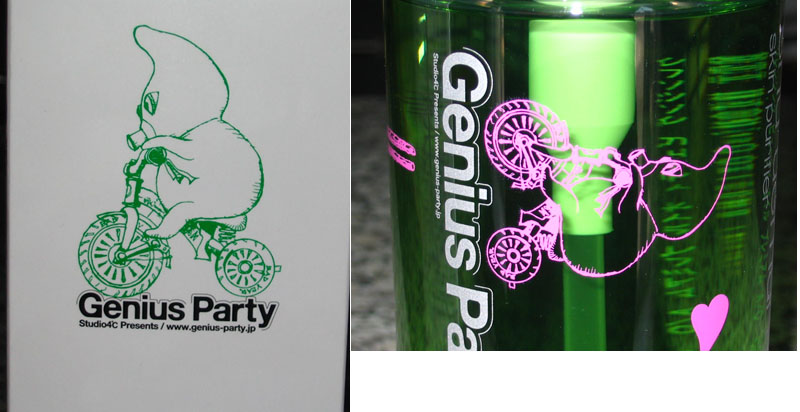
Unfortunately I can't seem to find a link to watch the films, but I did come across a very thoughtful and interesting analysis of the first segment as well as a review of the entire series.
I'm glad Shu continued working with visual artists to create unique packaging. I'm always curious to know the motivations behind the artist selection, besides the obvious goal of creating designs meant to sell products on a wide scale. The Genius Party cleansing oil, however, possibly represents a departure from this. Fukushima had this to say about the anthology: "The Genius Party project is completely the opposite of the kind of approach where you first assume to target a certain audience, and then create the content to match."1 Thus, Genius Party wasn't meant to appeal to anyone in particular. This begs the question of how these artists ended up working with with a cosmetics company whose primary interest in the partnership was to sell a skincare product.
There is no tie-in to the product itself or any kind of central theme, as there was with the Tremblay and Yamaguchi designs. Those two artists were commissioned to create illustrations specifically for the cleansing oil, while the Genius Party images were seemingly slapped on rather than being linked in some fashion. What's more, the opening piece supposedly explores the vague theme of the "birth of images"2, and the third segment involves a boy rescuing a frog from something called the "Life-Form Disposal Squad". Neither of these have anything to do with selling a product, so it's unclear as to why the characters from these particular films were chosen. My conclusion is that Shu simply wanted a unique-looking bottle intended for collectors and fans of the premium cleansing oil alike, and decided to work with artists who are on the cutting edge of anime.
1 This quote was taken from an article by Roland Kelts, accessed at https://japanamerica.blogspot.com/2008/04/anime-and-studio-4c.html.
2 "Einsteins of Anime," The Japan Times Online, June 28, 2007. https://search.japantimes.co.jp/cgi-bin/ff20070628r1.html
3 Author's note: The majority of online information on Genius Party and the Shu bottle is in Japanese, which unfortunately I'm unable to read, and the automated English translations were more or less useless. If I were able to get all of the information I came across in English this post may have been a bit more insightful.
 (image from forum.flymeos.com)
(image from forum.flymeos.com)


































































